
The Omlet Christmas Market is now open! With plenty on offer for dogs this year, you don’t want to miss out on this opportunity to get some great deals on gifts for any pampered pooches (and their owners!) that you have in your life.
Topology Bed
The Topology dog bed is a must-have for any pup who loves to put their feet up after a long day! With a high performance memory foam mattress base, this bed is also a brilliant gift for any dogs who need that extra bit of support and comfort for their joints. Available with a number of luxury toppers, including a dreamy faux fur sheepskin, the bed is great for keeping your four legged friend snug over the festive season!
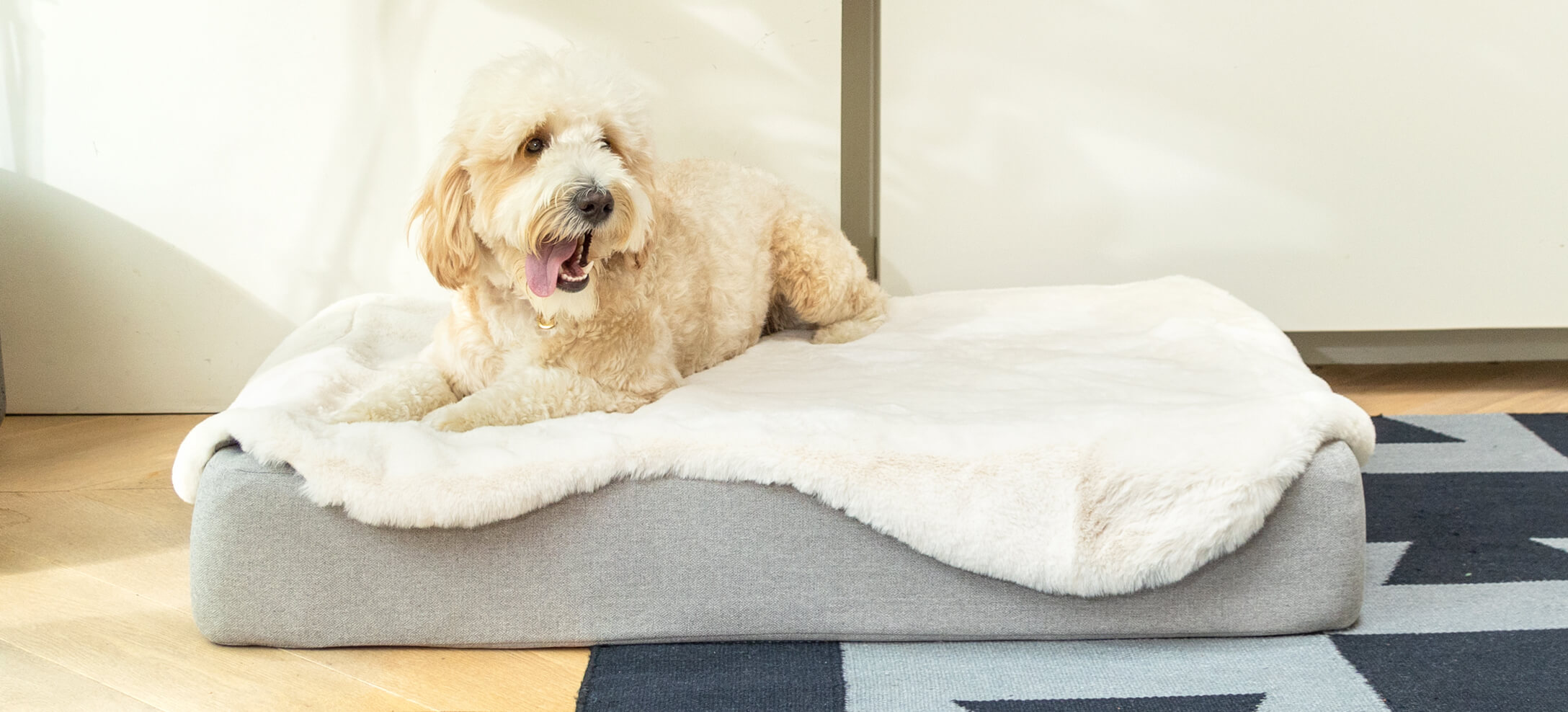
Bolster Bed
If you know someone who’s looking to upgrade their dog’s bed for the new year, the Bolster Dog Bed is a fantastic choice. The zip-on, machine washable covers make them ideal for any puppy accidents or muddy paw prints as well.
With a range of 15 different beautiful colours and a range of designer feet to choose from, the Bolster is ideal for any dog parents who want a stylish bed to match the interior of their home! How about opting for the Sage Green or Merlot Red to really fit in with the Christmas decor?
Luxury Super Soft Dog Blanket
The irresistible Luxury Super Soft Dog Blanket will be a real treat for any pups to find under the tree this year! The ultra cosy, sherpa blanket can be placed anywhere in the home to help your dog get a great night’s sleep. You can even position the blanket in your pup’s bed for even more warmth and comfort. Now also available in a very festive poinsettia red and cream design, your dogs can get into Christmas spirit with the rest of the family!
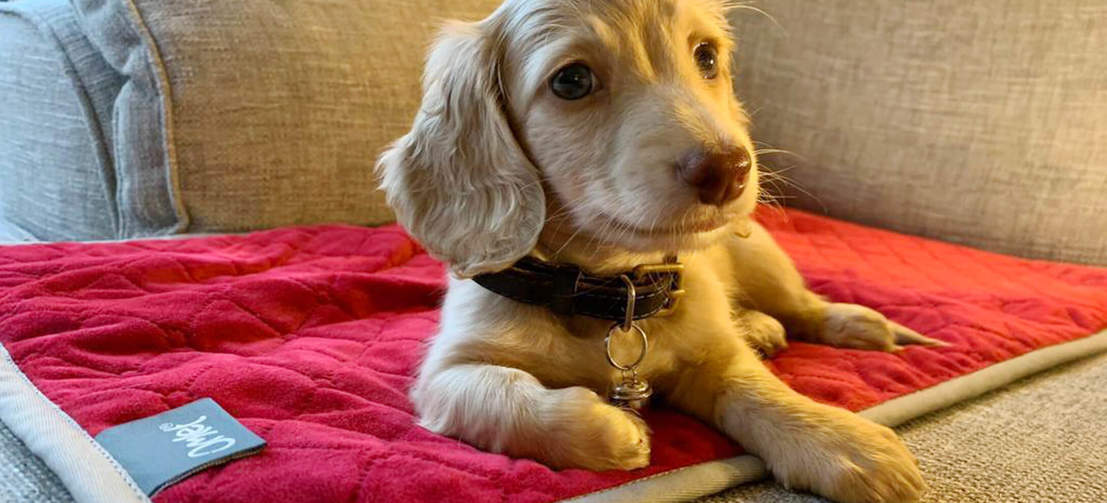
Joules Water Resistant Dog Coat
For a more fashion-forward pup, the Joules Water Resistant Dog Coat is the perfect accessory for those wintry shower walks. With adorable Joules embellishments, your pup is bound to get plenty of attention wearing this coat for their next stroll.
The lightweight coat has an inner lining, meaning that your dog will stay nice and toasty, alongside looking super stylish. With an adjustable velcro fastening and three sizes available, you can be assured that your furry friend will be super comfortable, as well.
This entry was posted in Christmas

It’s no secret that most dogs absolutely love getting muddy, rolling around in dirt and jumping in the biggest puddles they can find! This can unsurprisingly result in a very muddy pup and several trips to the dreaded bath! Whilst we can try and prevent our dogs from getting too dirty by discouraging digging and diving into puddles, it’s inevitable that some pups just can’t help getting their paws and fur muddy. Fortunately for us though, we don’t have to let our furry friends get in the way of a clean house. Here are our top tips on how exactly you can keep your house clean with a dog that loves mud.
Tips For Cleaning Around Your Home
Daily Floor Cleaning
It may seem obvious but with a pet comes more cleaning around the house! It’s a good idea to purchase a hoover that has been specifically designed with our pets in mind. These are perfect for helping to remove a buildup of dirt left around the house from your dog and any hair that is stuck in difficult to reach spots. If you’ve got hardwood floors, you can then use a high quality, pet safe surface cleaner to mop over any leftover dirt or potential muddy paw prints.
Plenty of Throws!
Not only do throws look great around the home during this time of year, creating a cosy autumnal feel, they can also help with keeping your furniture in tip top shape! Using throws on your furniture will save you a lot of time (and money), over attempting to clean your fabric sofa. Be sure to use easy to clean throws that can simply be put in the washing machine once they get smelly or accumulate any dirt or mud. You can also get your dog their own blanket like the Omlet Luxury Super Soft Dog Blanket, which can be placed on your furniture or their bed. Not only does the blanket provide ultimate comfort, it’s also dual sided, allowing you to choose a style to best suit your interior.
Consider Dog Bed Choice
There are several dog beds on the market and sometimes it can be overwhelming attempting to choose which will be best for your pet. Something you should consider however, is how it will affect the cleanliness of your home. Without regular washing, it’s easy for your dog’s bed to quickly become dirty with hair, dust, and mud as your pup returns from the garden or a walk. Dog beds with removable covers are a good choice, making for much easier cleaning than those without. Furthermore, dog beds with feet such as the Topology bed can help with keeping your dog’s bed cleaner for longer, as well as keeping the floor beneath the bed clean, minimising a build up of debris compared to dog mattresses that sit directly on the ground.

Tips For Cleaning a Muddy Dog
Regular Grooming
Regular grooming for your dog is essential, regardless of whether your dog has become visibly muddy or not. Whilst some breeds require a lot more grooming than others and are recommended to take regular visits to a professional groomer, you can also keep on top of their regime whilst at home. Between baths, you can use a dry dog shampoo to get rid of dirt and odours. You can also maintain your dog’s coat using a dog brush, suitable for their breed to help keep their fur healthy.
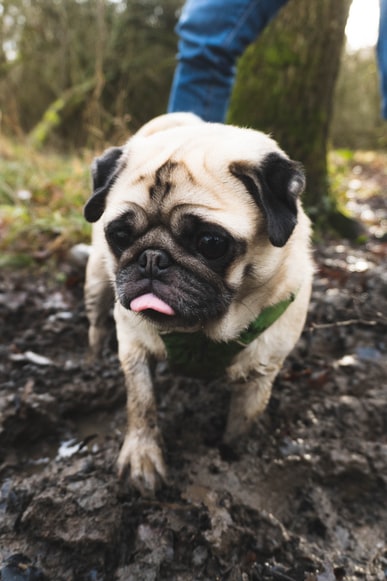 Wipe Your Dog’s Paws After Walkies
Wipe Your Dog’s Paws After Walkies
Dog paws can of course bring in dirt and mud into our homes, so wiping down your dog’s muddy paws after they come back from a walk is one way to prevent them from bringing this inside. To clean muddy dog paws and get the mud gone you can use paw wipes, specifically designed for dogs, gently rubbing away any dirt. Another great tip is to rub in a bit of natural coconut oil to your dog’s dirty paws after paw cleaning. This will help to hydrate and soothe sore or itchy paw pads.
Leave a Towel or Mat by The Door
You can leave a towel or mat by your door as another solution to keep your dog from leaving their muddy paw prints across the home. The Wet Paws Dog Mat for example can simply be placed at the door where your dog enters the house. The mat is highly absorbent, cleaning muddy feet by absorbing the mud from your dog’s paw pads. As you would with a towel too, you can then shake off the mat outside or throw it in the washing machine.
Having a dog that loves the mud doesn’t have to spoil your home. Hopefully after reading these tips you’ll be a lot more prepared on how you continue to enjoy your dog walks without fearing about your house!
This entry was posted in Dogs
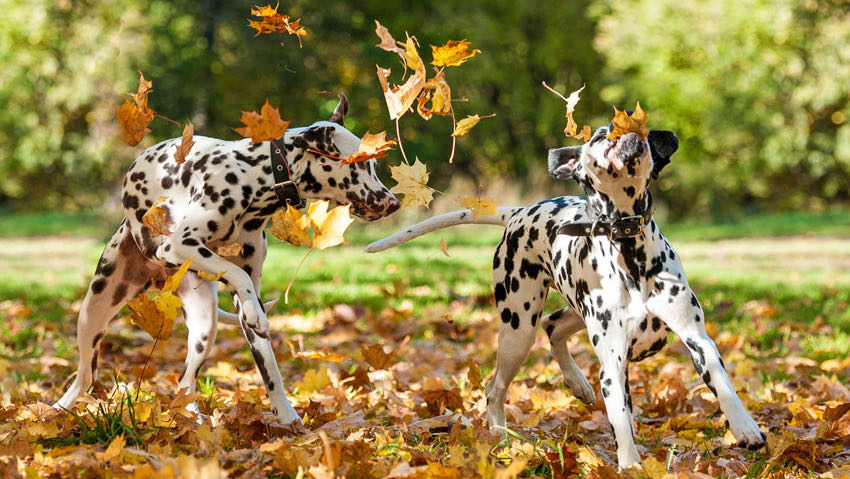
Most dogs love autumn. The children are back in school, which means the house is quiet during the day, and their favourite parks and walking trails are calmer. They’re allowed back on the beaches, there’s no pollen in the air and the temperature is pleasantly cool enough to be able to run around without worrying about overheating. And we haven’t even mentioned jumping in piles of crisp raked-up leaves! Safe to say there’s a lot to look forward to in the coming weeks for both canines and humans, but to make this time of year as amazing as possible for your furry friend, there are some things you might want to invest in or stock up on. Here is some advice and a useful checklist of what your dog needs this autumn.
A warm and comfy bed
When returning to the house after a rainy walk at this time of year, you’ll appreciate getting yourself comfortable with a cosy blanket on the sofa, or even under the covers in your bed. Your dog will feel exactly the same. Make sure your dog has a soft and supportive bed to rest on as the nights draw in. The Omlet Bolster dog beds have a high-performing memory foam mattress that will mould itself around your dog as they relax their bodies, and will provide them with a long, restful sleep all night.
Having a safe and warm space to return to after hours of autumn play is especially important if your dog is still a puppy. Keep your pet’s bed close to the central heating or in a room with a wood burner so they can be in the same room as the rest of the family, and make sure it stays warm throughout the night.
Coats for dogs
Dogs of all breeds can benefit from wearing a dog coat on walks to give them extra warmth and comfort during autumn and winter, but it’s extra important for small or short-haired dogs who are not naturally evolved to deal with lower temperatures.
Dog jackets are available in a wide range of styles and materials, and which you decide to go for is up to you, but we would recommend choosing a waterproof version that’s easy to clean.
If your dog is not used to wearing a coat it might take some time to get them comfortable. Start slowly by letting them sniff and explore the material, rewarding them with treats to give reassurance. Once they seem comfortable around the coat you can put it on for short periods in the house or in the garden, slowly increasing the time.
Halloween costume
Although possibly not an autumn essential, if the rest of the family is dressing up for Halloween you should of course include any furry friend as well. You can get super cute costumes online or in pet stores, or you could opt for a DIY version. A quick Google search should give you some inspiration. It’s important to never force your pet to wear a costume. If you see any sign of your dog being uncomfortable and stressed, immediately remove the clothing.
Reflective collar and lead
To make sure you and your dog are visible when you go for your early morning or evening walks, it’s a good idea to get a reflective collar and/or leash that will alert passing cars. Many walkers carry torches when walking in the dark, so reflective gear can be useful even if you’re not around vehicles. You can also get collars with LED lights that will make sure both you and others can spot your dog on country walks off the leash.
Controlling ticks and fleas
Don’t stop giving your dog tick and flea repellent treatments just because summer is over. Fleas and ticks can still be lurking when your dog is out for a walk and can find their way into our warm homes.
Dealing with mud
Even if your dog is not a fan of jumping in puddles, running through high grass or rolling in wet leaves, walks are going to get wetter and muddier as autumn approaches, so it’s worth making sure that you have everything at hand to deal with a cold and dirty dog. If you’re driving home from walks, it’s a good idea to have a towel or a dog blanket to dry off your dog before they get in the car to make sure they don’t get cold. A waterproof seat cover is another solution.
Get a dog-friendly shampoo for bath time, and a good brush to get rid of dirt and debris from the coat. If you’re not meticulous about cleaning your dog, it’s ideal to have a dog bed that is easy to keep clean like the Omlet Bolster dog bed. With a removable cover, it can easily be zipped off and put in the washing machine when dirty.
Grooming your pet
Your dog will start growing their winter coat in preparation for the colder season. To make sure it’s as healthy as possible, you can give your pooch a groom to get rid of dead hair and matted fur. This is especially important if your dog’s coat is very long or difficult to keep clean. You can start by just brushing through the hair, but if you’re able to it’s always good to let a professional groom your dog.
Keep your dog safe
Autumn does unfortunately also come with some pet hazards. Be aware that antifreeze is highly poisonous to dogs, and can result in acute liver failure and even death. Signs that your dog might have eaten something they shouldn’t include vomiting, seizures and difficulty breathing, so call your vet immediately if you notice any of these symptoms.
Rock salt used on the roads as grit could also be dangerous if ingested, so make sure you clean your dog’s paws thoroughly after walks.
Also, be aware that all sorts of dangers can hide under leaves and on muddy paths. Broken glass, toxic food or litter can seriously harm your pet, so to keep your dog happy and healthy it’s important to always keep a close eye on them when they’re exploring.
Omlet and your dog’s autumn
If you come prepared, this time of year should be a real treat for both dogs and humans, ideal for spending quality time together walking, playing and snuggling. And with Omlet’s Bolster dog bed, dog blankets and dog accessories, this autumn will be the best one yet.
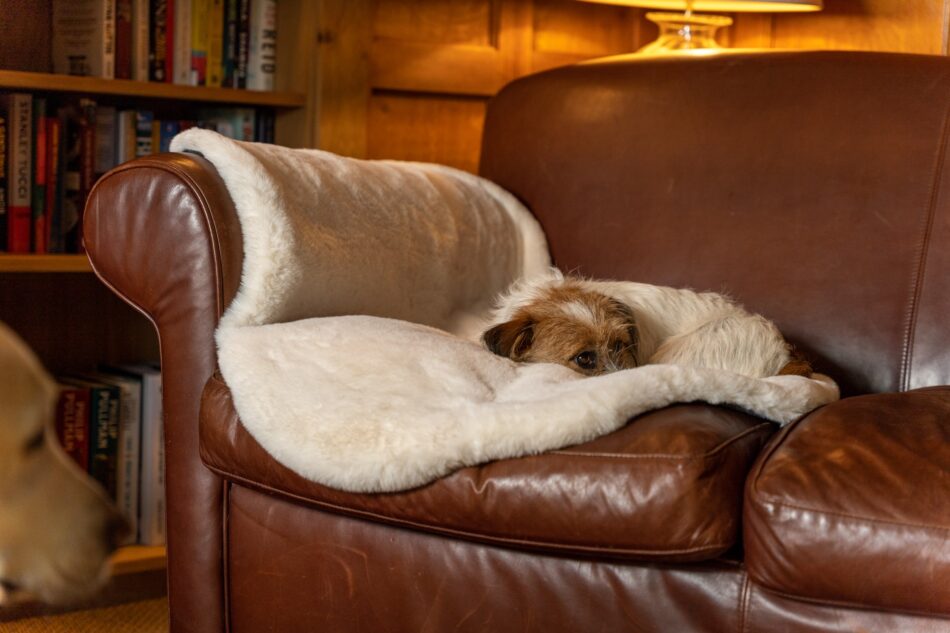
This entry was posted in Dogs
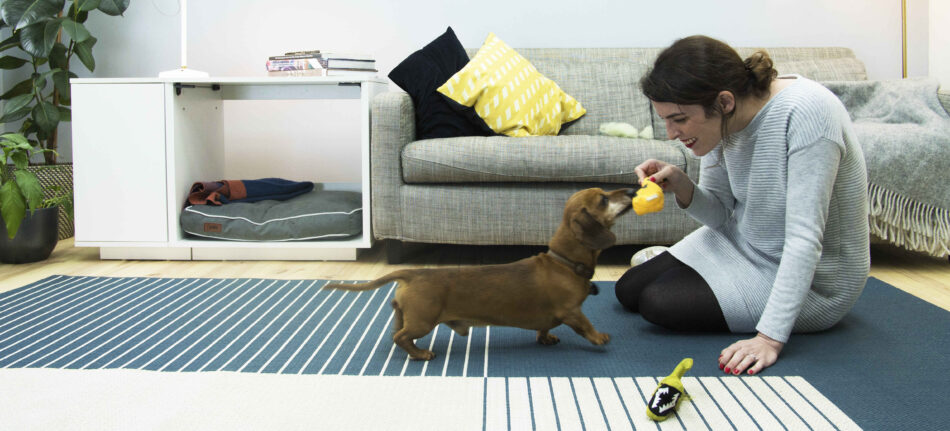
Come rain or shine our dogs need their daily walk… or two, right? But what happens when this just isn’t possible? Sometimes we can’t take our dogs outside for a number of reasons, be it extreme weather conditions, or maybe you’re in isolation. Regardless of your explanation, it’s a good idea to know how to keep on top of your dog’s physical health, as well as having an understanding of how to keep their brains engaged and stimulated whilst inside the home, even for when you’re able to take them for their regular walks again.
Although exercise with your dog inside most definitely does not substitute for your dog’s activity outdoors, there are a number of ideas to help you and your pup out, should you find yourselves in a situation when you can’t leave your home.
Physical Exercise Ideas
Tug of War
Tug of war is a great game to encourage your dog to exercise indoors. Before making a start it’s important that you’ve taught your dog the release command, to ensure they know how to drop their tug toy as soon as you ask them. Once they’ve mastered this, you can begin playing with a durable tug of war toy like the Nuts For Knots Dog Toy Tugger, which you can use to tug back and forth with your pup.
Create an Obstacle Course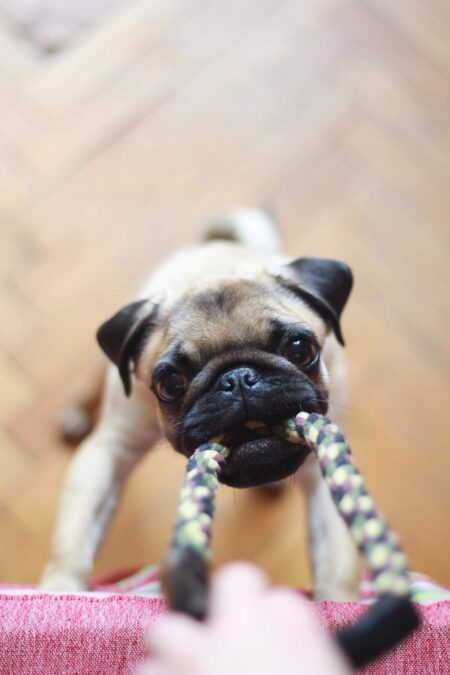
An obstacle course is a fantastic way to get your dog active around the house. You can make your course as simple or complicated as you want, and you’ll probably already have most of the equipment you need in your home! You can use a children’s play tunnel for your dog to run through, or even make your own using an old cardboard box, with dog treats to lure your pooch in. If you’ve got carpeted stairs, you can incorporate these into the course for your pet, or even use a hula-hoop or PVC pipes to have your pup jump through. You can really get creative here, as long as your dog is supervised at all times.
Play Fetch in The Living Room
This is definitely one for a rainy day when it’s impossible to even play with your furry friend in the garden. This classic game is one form of indoor exercise that is bound to tire out your dog, but be wary of this one if you’re lacking the space inside (or a great aim!). Remember to always use a soft ball toy to play this game to avoid any damage.
Get a Treadmill
Treadmills aren’t just for humans! If you have a particularly active dog breed that you know is dependent on being outdoors for hours of running, a treadmill is a great way to get their physical activity in and tire them out. It’s not advisable to use a treadmill built for us to take your dogs on, so if you’re considering this option to exercise your dog, you can invest in a purpose built dog treadmill. That way you can be assured that your pup will stay safe, knowing the machine is suitable for their weight and joints.
Mental Exercise Ideas
Try Out Puzzle Toys
Exercising your dog isn’t all about physical activity. Physical and mental stimulation are both incredibly important, with mental stimulation being able to use as much energy as physical exercise for dogs. Invest in a puzzle toy like an interactive dog puzzle, a brain game that will really get your pup thinking, providing them with plenty of mental stimulation. Watch as your dog uses up their energy as they work out how they can get to their treats.
Play Hide and Seek
Although hide and seek can involve a lot of physical exercise, it also requires a lot of brain power from your dog. Find a hiding space and have your dog wait until you call their name to find you. When your pup finds your hiding place, give them lots of praise or reward them with a dog treat.
Teach Your Pup New Tricks
Teaching your dog new tricks is an activity you can do without hardly any space, and something that will keep them mentally engaged. You can begin teaching your puppy basic commands as soon as they arrive home, usually at eight weeks old. However, as your pup gets older these can become more complex and fun. Take a look at the Omlet guide on clicker training, which you can use to teach your dog some impressive tricks with.
Scent Game
You can try hiding some of your dog’s favourite treats to really get their nose (and brain) working. This game is perfect for mental enrichment for your pup, and also one you can try to incorporate into your obstacle course. Before hiding your pup’s treats, teach them the “find it” command, so they know what to do when you release them to go on their scent hunt. You can first hide a treat under a towel and then build this up to hiding treats around the house.
Being stuck indoors is no fun for you or your dog, but hopefully after a bit of inspiration you’ve been able to pick up helpful tips to make it a lot less boring before you can be out and about again.
This entry was posted in Dogs
? The BIG Bed Sale! ?
Save up to 25% on Bolster Beds, Topology Beds and Donut Beds for a limited time only! Now is the perfect time to treat your pawesome pal to a cosy new bed this autumn ?
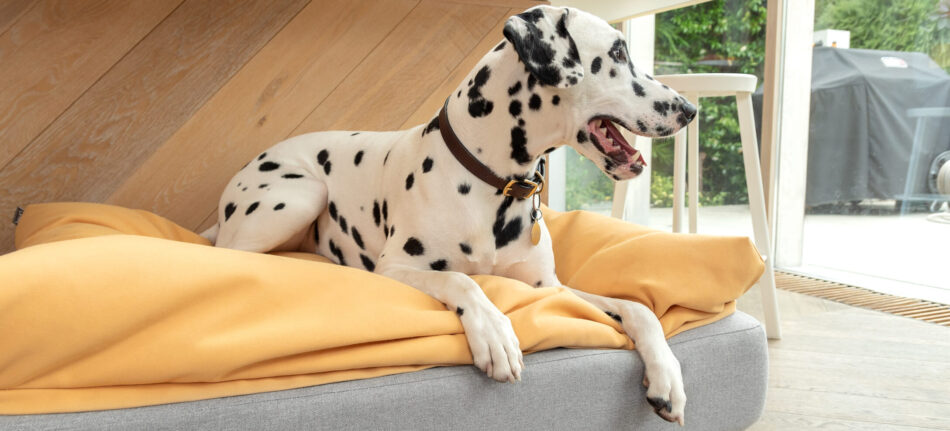
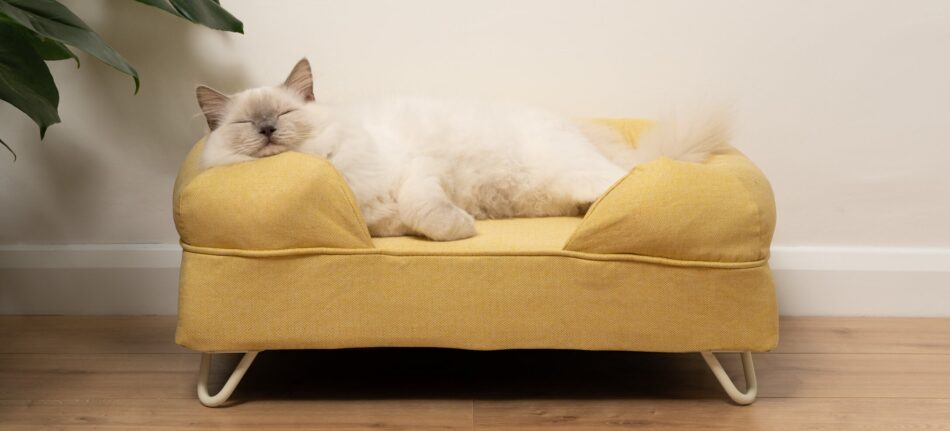
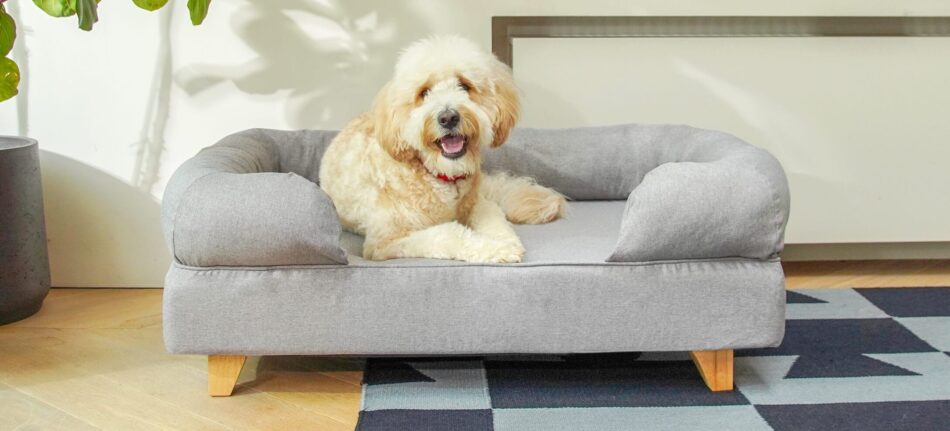

Terms and conditions
The promotion for 25% off beds is only valid from 14/09/21 to 17/09/21. The promotion only applied to Bolster Dog Beds, Topology Dog Beds, Maya Donut Cat Beds and Bolster Cat Beds, including covers, toppers and feet. Excludes all other dog and cat accessories. No promo code needed, discount has already been applied. While stocks last. Subject to availability. Omlet ltd. reserves the right to withdraw the offer at any point. Offer cannot be used on delivery, existing discounts or in conjunction with any other offer. You are not able to use a discount code on your order if your basket contains one or more discounted products.
This entry was posted in Cats
While the kids are away, the pets will play!
Start the new school year with 20% off selected Back To School Buys when you spend £30 on qualifying items. Look out for the pencil symbol on out website to find all the included items, or choose some of out favourites ✏️
Terms and conditions
This promotion is only valid from 02/09/21 – midnight on 06/09/21. Use promo code BACK2SKWL at checkout to get 20% off when you spend £30 on selected products. While stocks last. Must spend £30 on items displaying on the website with pencil icon for 20% off to work. Subject to availability. Omlet ltd. reserves the right to withdraw the offer at any point. Offer cannot be used on delivery, existing discounts or in conjunction with any other offer.
This entry was posted in Budgies
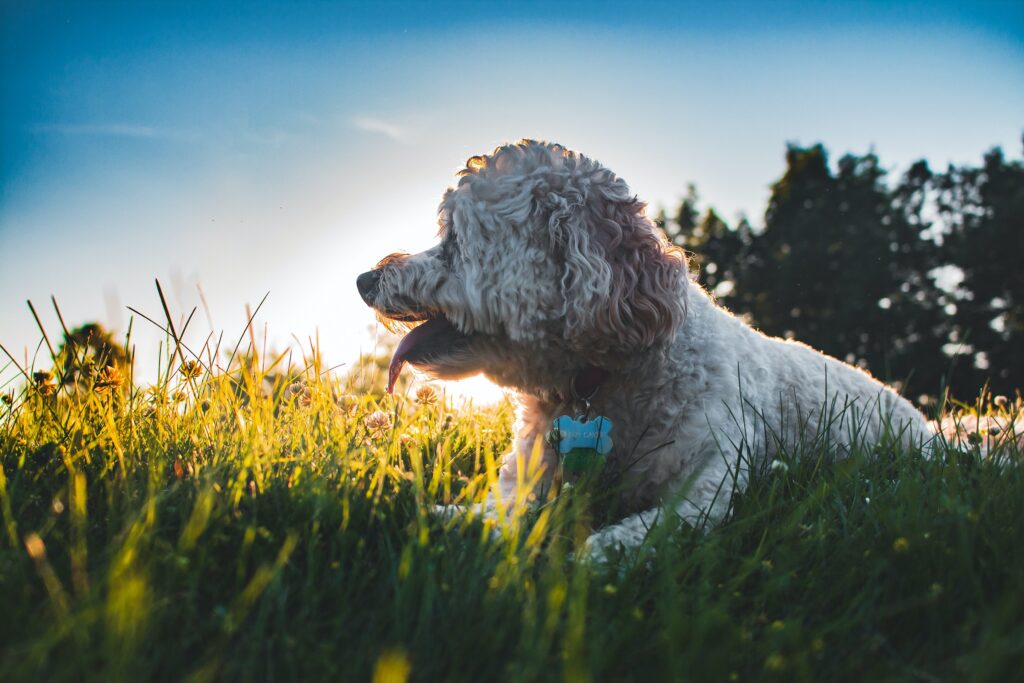
Getting a new puppy is such an exciting time for everyone involved (even if it means a manic few months ahead of you!). A cross between a poodle and cocker spaniel, cockapoos have soared in popularity over the past few years, with their hypoallergenic coat and undeniably cute looks both playing a huge part in this! With such a loving and fun temperament, it’s hardly surprising that they have become a new firm family favourite. So, now you’ve decided that a cockapoo is the right puppy for you, where exactly do you start? Writing a puppy checklist is a good idea to get prepared before you bring your pet pooch into their new home.
Essentials for Before They’re Home
The first few days with your new puppy might be tough, as they adapt to your life and you become familiar with your four legged friend. Every dog is different but there are some essentials that we recommend for your cockapoo before even bringing them home that will make for a much easier start.
Food and Water (Including Bowls)
Puppies, of course, need a fresh supply of food and water (along with appropriate sized bowls for each). A reliable cockapoo breeder will tell you know what food your cockapoo puppy has been on before they come home, to make for a less stressful transition. Be sure to also purchase treats for your new furry friend. They’re a fantastic way to start the training process and will keep your puppy motivated.
Collar and Lead
When you pick your puppy up, they’ll probably have had a collar on to differentiate them from their littermates. However, you’ll want to purchase your own, even before they are able to go for their first walk. This will help to train them to get used to the feeling of a lead and collar. For size reference, cockapoos are generally medium sized dogs but this can range depending on what type of poodle they are mixed with. The general rule of thumb is that you should be able to fit two fingers under your cockapoo’s collar. Alternatively, you may wish to opt for a harness. Whichever you decide for your new cockapoo pup, make sure they are fitted with an ID tag, which states your name, first line of your address, postcode, contact number, and a message that indicates that your dog has been microchipped i.e. “I’m microchipped”.
A Crate and Bedding
When you bring your puppy home you should introduce them to a crate. A crate should never be used as a cage or to punish your dog, but should work as a den for your new cockapoo. The Omlet Fido Studio Dog Crate allows your dog to have their own private and safe place in the house, whilst the modern design will compliment your home. Happy owner and happy pup!
Puppies need sleep, and a lot of it! So comfortable bedding for your cockapoo puppy is essential. Your Fido Studio Crate can also be very easily fitted with a wide range of dog beds. The easy clean Topology dog bed is perfect for puppies, allowing you to zip a puppy training mat below the bed topper for any accidents, and it’s quick and easy to zip off the topper to throw in the washing machine when it’s time for a freshen up!
A Few Extras For Your Cockapoo
Puppy pads
Cockapoos are remarkably intelligent and many puppies take to toilet training within the first few weeks. For when your pup arrives home it really is a personal preference as to whether you’d like to use puppy pads for toilet training or not. Puppy pads are massively convenient, especially to those with limited outdoor space. However, if getting up in the middle of the night to take your puppy for a wee isn’t a problem for you then you may wish to avoid this product as your pup may find it difficult or confusing to transition between the pads and outdoor peeing.
Toys
Pups love to play and cockapoos are no different here. Known for their outgoing, playful personalities, you’ll need to be stocked up with plenty of puppy toys to keep their minds occupied. Toys are also great for when you have to start leaving your puppy alone. Do make sure however, that any toys you leave with them are safe, age appropriate, and cannot be consumed! Puppies also love to chew, especially as they get into the teething stage. Be sure to explore different styles of dog toys to see how you can keep your cockapoo entertained and help with their chewing.
Grooming Kit
Although it’s wise to take your cockapoo to a professional groomer now and again, it’s also important to upkeep their grooming at home too. Purchasing a brush, comb, dog shampoo, and nail clippers is a great place to start. However, as cockapoos are of course a mixed breed, their coat type may vary. When your puppy reaches around seven to nine months old, they’ll develop their ‘adult coat’ and you will have a better indication of the best way to groom your dog.
Hopefully all the time spent preparing to bring your new puppy to their new home will help your family to transition better to life with your new furry friend!
This entry was posted in Dogs
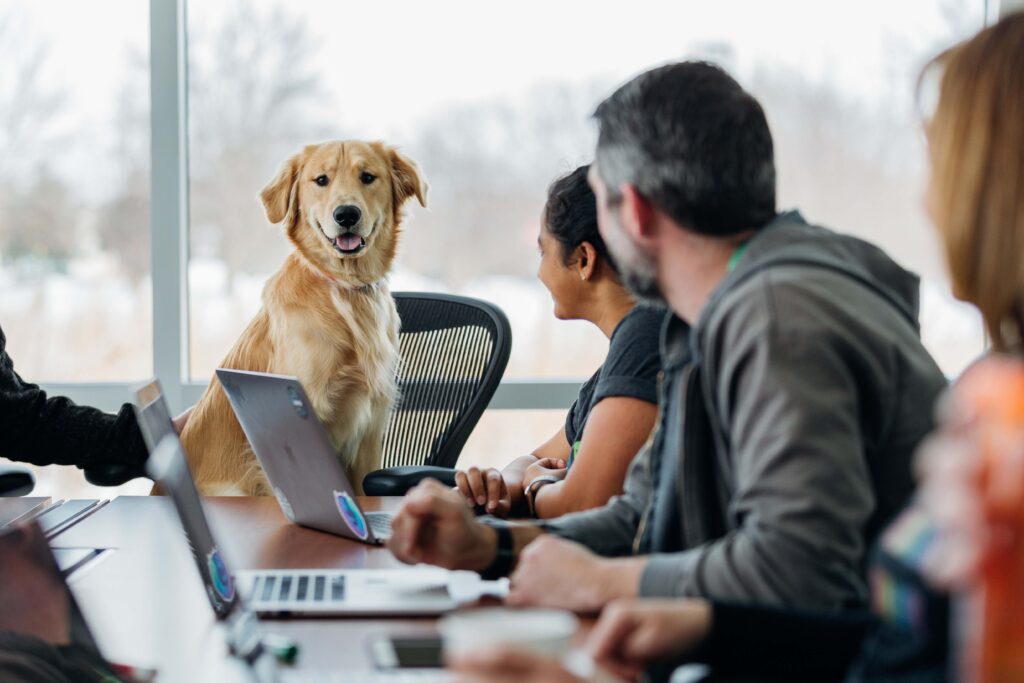
Many of us have worked from home over the past year with our best furry friends beside us, giving encouragement and comfort on the toughest of days. It’s understandable for those people that going back to the office without their canine companion could be nerve wracking and upsetting. For the dogs who are now used to constant company, new spouts of being home alone could lead to anxiety and stress. But what if there was a better solution? What if your workplace was dog-friendly? Read on as we take a look at the benefits for all parties…
How do dogs improve our mood?
It’s no secret that dogs, and pets in general, are good for our physical and mental well-being, whether that be through easing loneliness, encouraging exercise, or reducing anxiety, stress and depression. You might have felt it yourself when returning home to your dog, or perhaps going to visit a friend’s new puppy. Interacting with dogs increases our levels of the hormones oxytocin and serotonin, which are important for the regulation of stress and anxiety and also improve our mood and happiness.
Having a dog present in an office environment can significantly elevate the mood, while also improving communication, reducing tension and increasing productivity!
Can a dog-friendly workplace benefit employers?
Not only will your boss enjoy the mood-boosting benefits of a new four-legged colleague, they may also begin to notice some practical benefits for their business too.
For some employees, especially those who have been working from home for a long time now, going to the office requires someone to look after their dog, perhaps hiring a dog walker to take them out or even a hurried trip home in their lunch break to check on their dog. Understandably, this in itself can be a cause of stress for any dog owner, and being able to take their dog to the office with them is a huge job-perk which could be hard to walk away from. Could a dog-friendly office actually improve employee retention? Woof!
Do dogs enjoy going to the office?
Obviously it’s not all about us. If you’re going to be taking your dog to the office you also need to consider whether he/she will be comfortable with the new environment.
If you’re thinking about taking your dog to work for the first time, you may have to accept that the first few trips won’t necessarily be a walk in the park! Start slowly if you can, introducing your dog to colleagues and spaces gradually so as to not overwhelm them. Have a bed next to your desk so your dog can see you at all times and reward them with treats and pets regularly.
Maybe not after the first visit, but hopefully soon your dog will relax into the new environment just as if they’re at home, and new faces, sounds and smells will no longer be a cause of excitement or stress. Instead, they will feel the benefits of being close to you, just as you do!
What should you consider before taking your dog to the office?
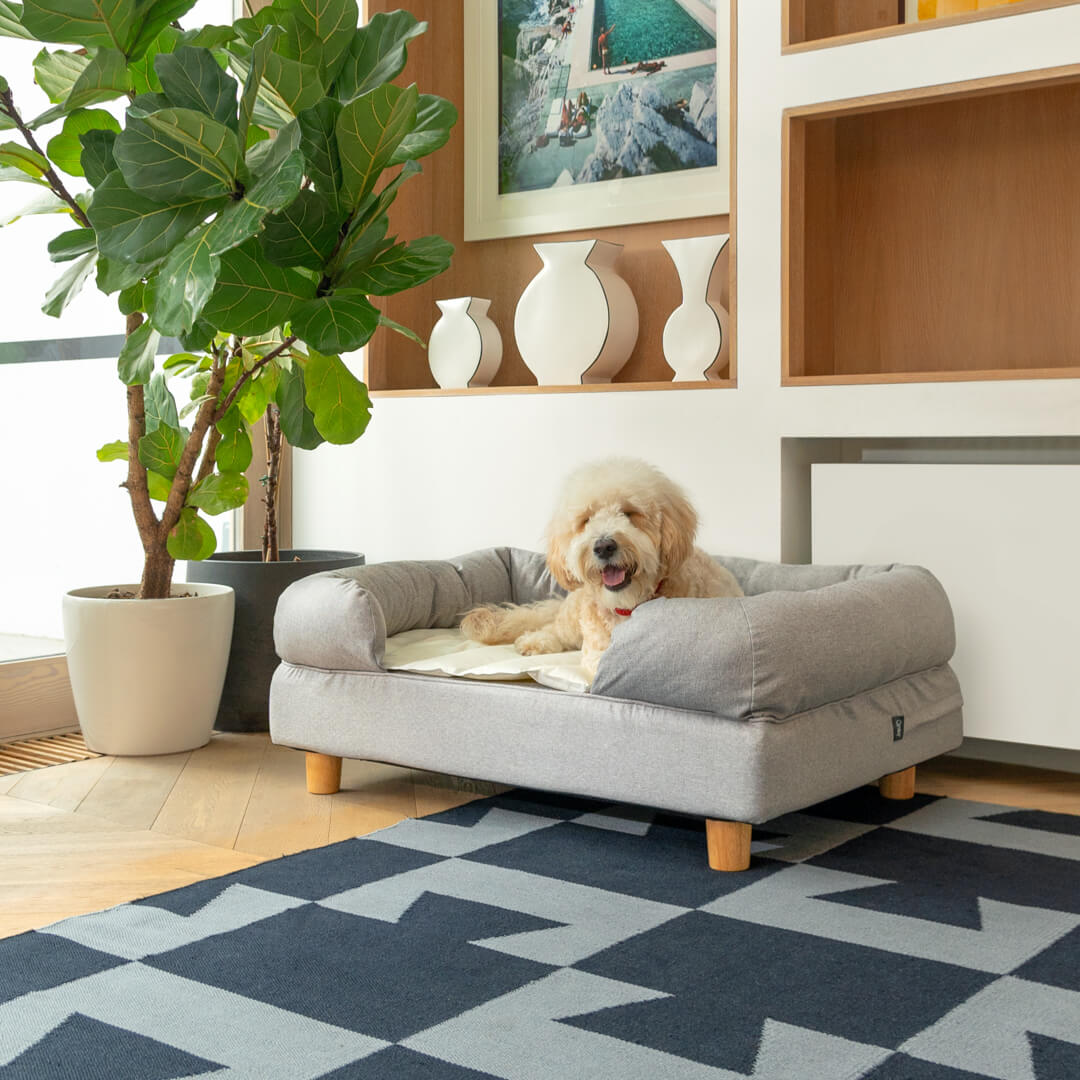 If your boss has given the green light to bring your dog to the office, there might be some things to check before going ahead. Of course, check in with your colleagues that no one has allergies or is afraid of dogs. If other colleagues are also going to be bringing their dog to the office, consider whether your dog will be okay with that, or if it could cause some stress.
If your boss has given the green light to bring your dog to the office, there might be some things to check before going ahead. Of course, check in with your colleagues that no one has allergies or is afraid of dogs. If other colleagues are also going to be bringing their dog to the office, consider whether your dog will be okay with that, or if it could cause some stress.
Make sure you can schedule breaks in your day to take your dog outside to stretch their legs and go to the toilet – this fresh air time is also great for your own well-being. Make sure you have everything with you, including treats, poo bags, a water bowl and a comfy bed where your dog can feel comfortable and relaxed. You may wish to keep a set of these items at the office if you’ll be bringing your dog with you regularly.
Whether or not you decide to take your dog to the office, the most important thing is that your dog is happy and comfortable. If you are returning to full time office working, consider your options to decide what’s best for your dog.
This entry was posted in Dogs
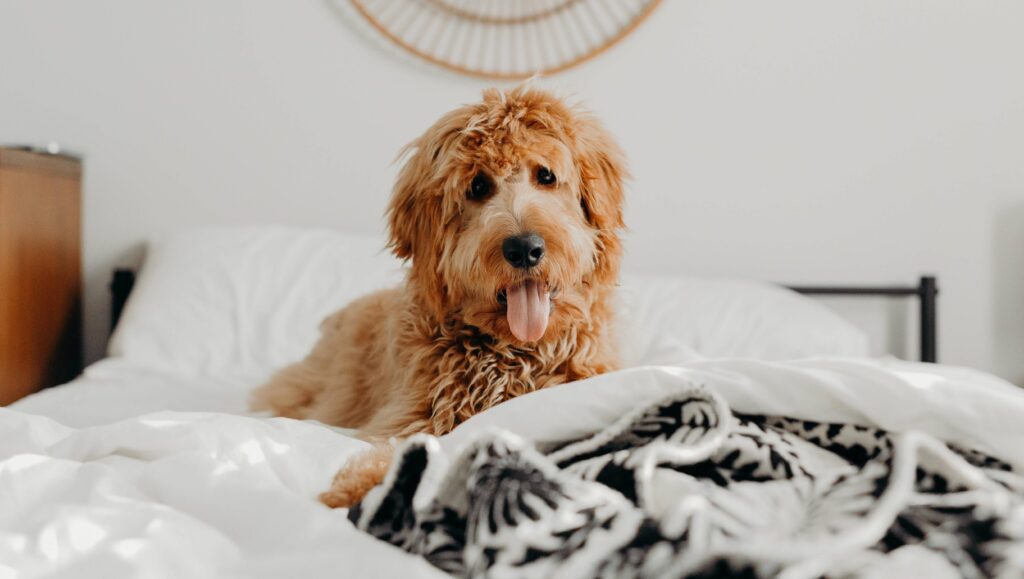
We all love our pets, and sometimes it simply seems far too difficult being apart for just a few hours, even at night. So with two thirds of Brits with cats or dogs now sharing a bed with their furry friend, it’s clear that the prospect of snuggling up with the cat or dog at bedtime can sometimes be impossible to resist. Many pet owners would agree that co-sleeping with a beloved pet seems harmless. However, with sharing the bed also comes drawbacks. First of all, though, let’s talk about the main benefits of letting your pet sleep on the bed.
Benefits of Sharing a Bed with Your Pet
Bonding
Sleeping with your pet can be a great bonding experience for both parties. Dogs and cats provide their owners with physical comfort and support, strengthening your bond and relationship, which can help your pet to feel more at home.
Security
For dog owners in particular, sharing your bed with your pet every night can be a great security measure if you have any concerns about break ins. Regardless of how your dog would react to any intruders, they’re a great deterrent to any burglars and provide you with a sense of safety at night. Although your cat might not be able to put up much of a fight against any intruders, they’re highly sensitive creatures and can alert you of anything that appears suspicious, such as unusual smells or sounds.
Reduces Stress and Anxiety
Studies show that co-sleeping with your pet can help elevate your mood and reduce stress and anxiety levels. When you cuddle with your dog or cat, having that contact releases the happy hormone of oxytocin. Reduced levels of stress and anxiety levels may also help you to get a better night’s sleep.
Personal Alarm Clock
Like humans, cats and dogs sleep at night and are awake for the day (well, for the most part!). They’re both creatures of habit and love routine so don’t be surprised if you get a very personal wake up call from your pet at 6am every morning. Look on the bright side though, you might never have to set an alarm for work ever again!
Drawbacks of Sharing a Bed with Your Pet
Fleas and Parasites
Unfortunately, cats and dogs are notorious for fleas. If you regularly welcome your pet into bed for a snuggle at night, then you may also be welcoming their fleas too. Although easily treated, having fleas is an unpleasant experience for both you and your pets. More worryingly, co-sleeping with your pet could actually be putting your health at risk. Both dogs and cats can spread parasites such as tapeworm, that can make us sick.
Hair!
If your cat or dog is prone to shedding then don’t expect your bed to escape from the mess! It’s no secret to most pet owners how much of a nightmare it can be to forever be hoovering up your dog or cat’s fur from around the house, so if you don’t fancy adding another chore to the list then maybe it’s best to avoid sleeping with a dog or cat.
Allergies
It’s not a good idea to share the bed with your pet if you suffer from allergies, even if they’re not pet related. Those who suffer from asthma or are sensitive to pollen and dust for example, may find their allergies being triggered from sharing the bed with a dog or cat.
Behavioural Problems
When you allow your animals to share the bed, you run the risk of facing behavioural problems. For dogs that are prone to separation anxiety or territorial aggression, allowing them to sleep on the bed at night could only be worsening these issues. Cats can also suffer from issues such as territorial behaviour, so if you’re met with a hiss or lash out from your cat when you attempt to move them off the bed then it’s probably not a great idea to continue sharing.
If you (or your pet) do decide to sleep alone, it’s important to make sure that you provide them with a safe and cosy bed at night. Omlet stock a wide range of pet beds for dogs and cats that optimise comfort and hygiene, so that your cat or dog will be just as snug in their own space.
If you (or your pet) do decide to sleep alone, it’s important to make sure that you provide them with a safe and cosy bed at night. Omlet stock a wide range of pet beds for dogs and cats that optimise comfort and hygiene, so that your cat or dog will be just as snug in their own space. The new Maya Donut Cat Bed offers first class comfort, made with a luxurious faux fur fabric your cat will love. Or how about trying the Topology Luxury Dog Bed for your pet pooch. With a memory foam mattress base, your dog will be in their element with a number of customisable toppers to fit their personality.
So, as amazing as it can be to share the bed with our favourite furry friends, with risks such as behavioural issues and allergies to consider, the decision really is a matter of personal choice. Either way, it’s always worth investing in your pet’s own bed to give them the option to have their own safe space (however little or often it may be used!).
This entry was posted in Dogs
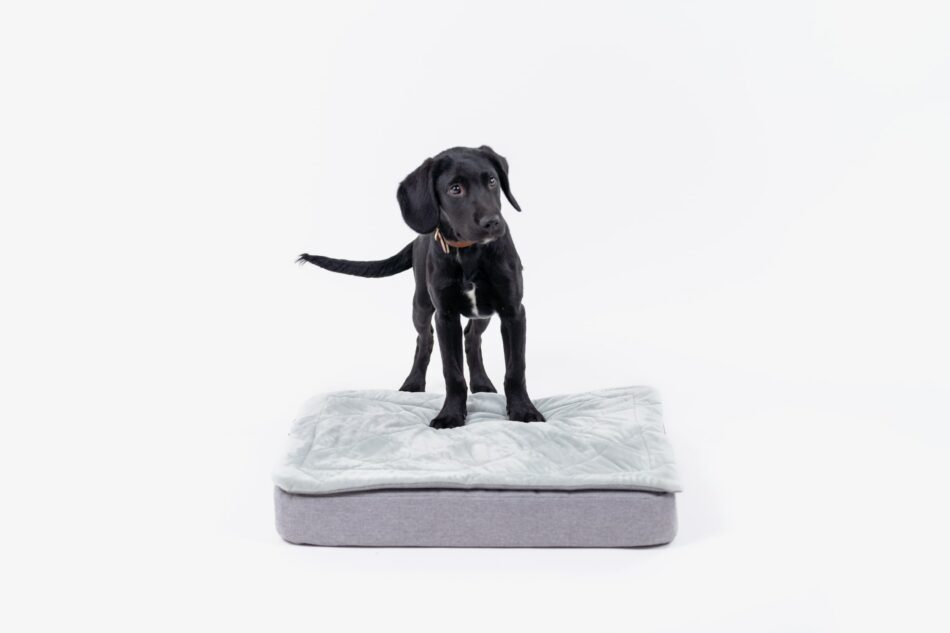
Choosing the right dog bed for your puppy can be tricky – or at least it used to be…Omlet’s Topology dog beds tick all boxes for your new best friend’s nap time needs, meaning you no longer need to compromise on what your puppy truly wants. Say goodbye to flimsy mattresses, chewed-up toppers and bad bed odours and discover why Topology is the perfect solution.
Comes in three different sizes
Depending on your dog’s breed, your puppy might be super small at the moment, but they’ll quickly grow up to be a full-sized dog before you know it. And since the Topology dog bed is the last you’ll buy, we recommend buying a bed based on their predicted measurements as a fully-grown adult dog. You want to make sure that your dog will be able to fit on the bed in all possible sleeping positions. The bed might look comfy when they’re curled up into a furry little ball, but would they be able to stretch out their legs if they wanted to? As they grow older you’ll find which positions they tend to sleep in, but for now, it’s best to go slightly bigger to be on the safe side.
The Topology dog beds come in three sizes to accommodate all breeds and are designed to fit snugly into standard-sized crates, avoiding any gaps along the sides. Just be sure that if you’re planning on dog crate training and want to put your bed in the crate, check your dog’s crate dimensions to ensure it fits. Take a look at our dog size guide so that you can match your breed to the right bed.
Choose from a range of removable toppers
The genius of the Topology design means that you can choose a range of versatile dog bed toppers which can all easily be removed to put in the wash, reducing odours and improving home hygiene.
For puppies, we recommend the Quilted topper, designed by Omlet with razor-sharp puppy teeth in mind. This super soft topper means optimum comfort for dogs of all ages and the durable fabric with the option to zip a puppy pad underneath, makes this style perfect for growing dogs. We’ll even replace your Quilted topper or mattress cover for free should your puppy chew through it within the first 6 months under our 180 Day Puppy Guarantee*.
Whilst your Quilted topper is being washed clean, you can choose an extra topper to zip onto your Topology dog bed. The Sheepskin topper is ideal for smaller puppies that might need a bit of extra warmth, transforming their bed into a cloud of tranquillity. Plus, you can pick from five different colours of this luxurious topper to match your home decor.
Minimise chewing damage
All puppies will chew – there’s no way around it. Dog breeds such as Golden Retrievers that are bred to use their mouths to fetch and carry are more likely to destroy anything that comes in their way, as well as breeds with a high prey drive.
You can of course train your puppy from an early age to only chew appropriate dog toys or other accessories, but if they do manage to get those sharp teeth into their bed, the design of the Topology Puppy Bed means they’ll likely be unsuccessful in getting through the topper or mattress.
No need to worry about dirt and accidents
Puppies get into all sorts of mess, so being able to zip off the topper and put it in the washing machine will make your life a lot easier, and your dog will appreciate having a fresh bed to return to.
This goes for puppy toilet accidents as well. If there’s a leak, the mattress under the topper has a waterproof cover that you can easily remove and wash with the topper. If this becomes a recurring problem, you can even put a puppy training pad on the mattress before your zip on the topper to soak up any accidents.
Provide premium comfort
Puppies sleep up to 20 hours a day, and it’s super important to give their growing bodies extreme comfort and support. Keeping your dog off the ground on a sufficiently padded surface can prevent severe arthritic pain in the future, so make sure you choose a good-quality bed.
Topology dog beds have a memory foam mattress that moulds around the body as the dog lays down on it, and provides amazing support for tired legs after vigorous play. The toppers all add extra comfort, either by super softness against the body, like the Quilted or the Sheepskin, or by extra padding like in the Beanbag or Bolster toppers.
Pick the perfect extras
If you decide not to place your puppy’s bed in a crate, you can elevate your Topology off the ground with a range of stylish feet. Raising your dog’s mattress reduces drafts and improves the airflow under the bed, which helps minimise a build-up of mould, mildew, dust and debris.
It’s also a good idea to add a blanket to the bed to make your puppy’s Topology dog bed for an even better night’s sleep. Simply place your Omlet Luxury Faux Sheepskin dog blanket on your puppy’s bed and they’ll soon learn to associate it with a safe and calm environment. This means that if you go away on holiday or have to take your puppy to the vet for their jabs, you can bring the blanket and give him or her an extra sense of safety.
Omlet and your puppy
We’re confident that your new puppy will love their Topology Dog Bed, and you can be confident knowing you’ll have a dog bed to last a lifetime with our 180 Day Puppy Guarantee. Plus, with accessories such as designer dog bed feet and super snug dog blankets, your furry friend will be sure to have their own puppy paradise for years to come.
*Click here for full 180 Day Puppy Guarantee T&Cs.
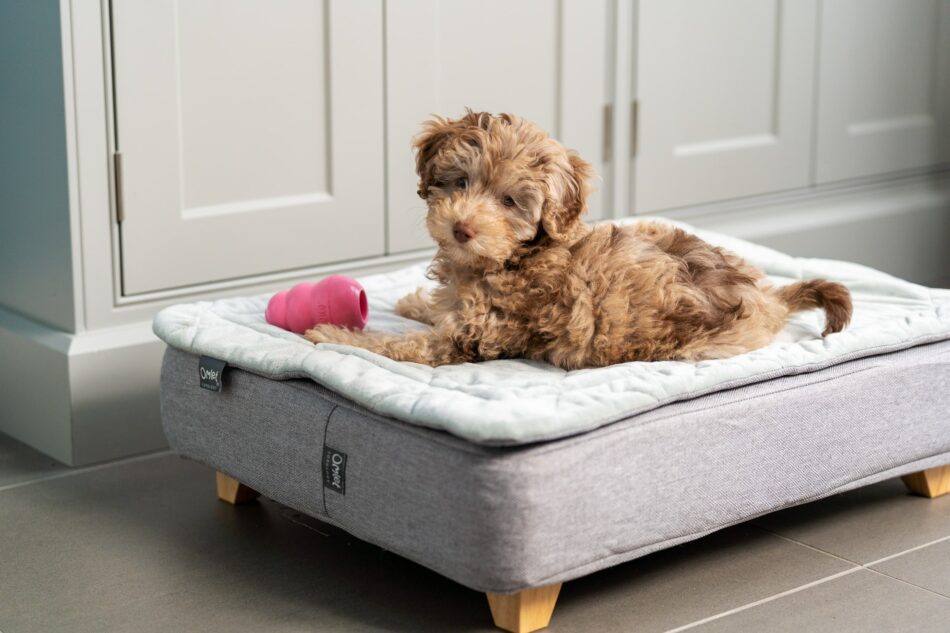
This entry was posted in Dogs
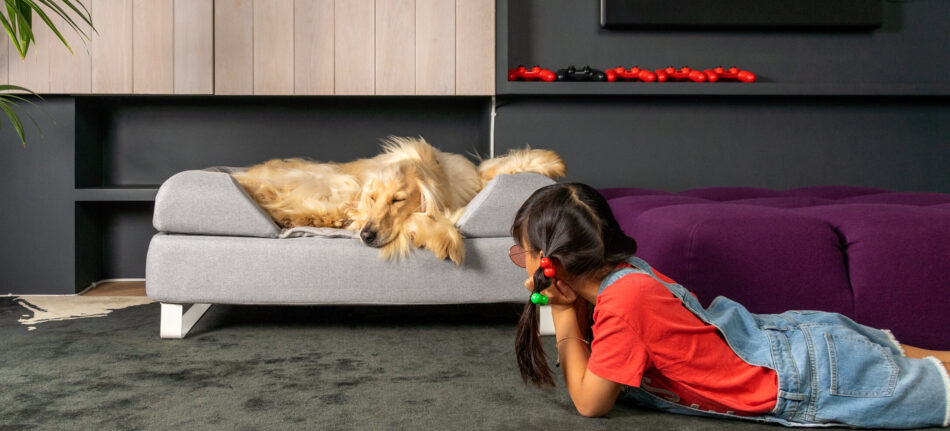
Washing a dog bed regularly can help to ensure your pet always has a clean environment. It also minimizes the risk of fleas, germs, and dirt build up. Our guide shows you how to easily wash your dog’s bed, as well as the best beds to keep your dog happy and healthy.
Why do dog beds need washing?
An unclean dog bed can cause serious problems for your beloved pet. Infections can be passed from dog poo and urine or anything the dog has regurgitated. The bacteria in these bodily discharges can linger in the mattress for several months. There are potential problems with an unwashed dog bed that a simple brush or vacuum-clean cannot tackle. Sleeping in this unsanitary condition could result in your dog becoming ill, with the knowledge to keep their dog bed clean you’ll be able to reduce this risk.
All dog beds provide a good night’s sleep for your dog, but the best ones do far more than that. They keep dirt and bacteria at bay and make the home environment healthier for everyone.
Dog beds become dirty and smelly over time. They can also harbour flea eggs or ticks. Washing them is essential, and this can be a simple or complicated task, depending on the type of dog bed your pet has.
Washing a dog bed with a removable cover is simple. Without a removable cover, a thorough clean becomes more challenging.
Simple steps to wash a dog bed with removable covers
Washable dog beds with a cover are easier to clean than ones without a cover. Our easy steps on how to clean a dog bed with removable covers will help you give your pet a sparkling bed in no time.
How to wash the dog bed cover
- Vacuum the dust and hair from the dog bed and dog blanket to prevent the fine hairs from clogging up your washing machine filter. A vacuum cleaner with an upholstery attachment is ideal.
- Remove the cover and vacuum the mattress and all other parts of the bed.
- The cover of the dog bed can then be washed, along with the blanket. Use a pet-safe washing liquid and, if needed, a stain remover.
Washing your dog’s mattress
Depending on the type of bed you have, you will sometimes have to wash the mattress of your dog bed too. A model like the Topology dog bed has a waterproof cover that keeps the dirt away from the mattress. Although there may be occasional leaks if the dog has soiled the bed, in which case the mattress will need washing.
- The dog bed mattress should be soaked in a bathtub of hot water using a pet-safe washing product.
- Alternatively, it can be soaked for 15 minutes in a tub of water in which two tablespoons of bicarbonate of soda have been dissolved.
- Some mattresses are pliable enough to be washed in a washing machine and dried in a tumble dryer.
- Otherwise, it will have to dry outside. Choose a warm sunny day if possible – easier said than done at certain times of the year! The important detail is to choose a well-ventilated area, which will prevent mould from growing as the bed dries.
Washing a dog bed without a cover
Even if your dog bed does not have a removable cover, you can still wash it with ease. The following steps detail how to hand wash your dog bed.
- First, hoover-clean the bed, getting into all the folds and corners.
- Next, use a brush to loosen any hairs caught in the dog bed’s fabric and then vacuum it again.
- Individual stains can be spot-treated with an enzyme-based cleaner before soaking the whole bed in hot soapy water for 15 minutes. Squeeze and turn the bed a few times during this time, to remove as much dirt as possible.
- If the bed is very dirty and the water turns brown, soak the bed for five minutes and then replace the water.
- The bed should then be scrubbed all over using a damp brush dipped in baking soda. Use a toothbrush for the folds, seams and corners. This will add the finishing touches to the cleaning and will also deodorize the dog bed.
- Fill the tub with warm water again and soak the dog bed, squeezing and kneading it to remove all traces of detergent.
- Repeat until the water shows no traces of soap bubbles.
- The dog bed can then be air-dried in a warm and well-ventilated place.
Omlet’s easy to clean dog bed
The perfect easy to wash dog bed is a waterproof one made with cleaning in mind. If it has a machine washable cover that zips on, the bed can be washed and dried within a few hours. This system also has the advantage of longevity, as a worn-out cover can be replaced.
Our Topology dog beds employ this system and come in various versions and colours, all machine-washable at 30C (85F). You’ll also find the Omlet Bolster Dog Beds have removable covers for easy washing too. By matching light and dark colours to your dog’s coat, the hair will be less visible. A minor issue, perhaps, but white hair on a dark mattress, or dark hair on a white bed, looks very messy. The Topology covers are also waterproof, which protects the memory-foam mattress underneath. They come in different sizes, too, to suit all breeds of dog. Topology beds also prevent dirt from accumulating around the bed or mattress, as they have frames with legs that keep the structure off the ground.
How often to wash a dog bed
Now you know how to wash your dog’s bed, you may wonder how often you should be cleaning it. Washing the dog bed cover once every week or so eliminates issues of dirt and germ build up. The frequency will depend largely on how much hair the dog sheds and how dirty it tends to get. If anyone in the household has a dog allergy, frequent cleaning is essential.
To kill any potential nasties lurking in the bedding, it will ideally need to be washed at 60C (140F). Although lots of dog bedding will have washing instructions recommending a lower temperature. A waterproof cover, which is a feature of the Topology range, prevents the mattress from soiling, and these covers can be washed at low temperatures.
Omlet petcare
Treat your dog to the accessories they deserve. Luxury dog crates that will help to crate train puppies as well as training adult dogs, to dog toys that will help build your bond, we have the items to make your dog comfy and happy.
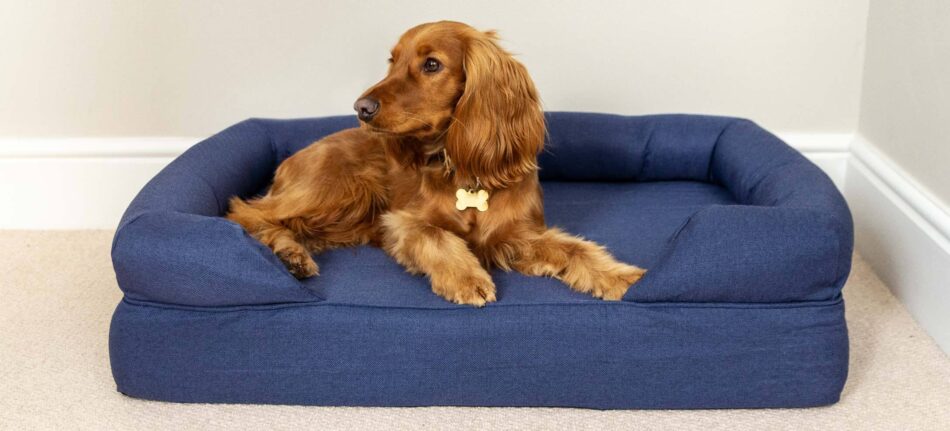
This entry was posted in Dogs
It is a common myth that dogs only see in black and white. This is not the case, although their colour vision is limited compared to humans.
In that case, you may now be wondering “well, what colours can dogs see then?”, and how exactly do we as humans know this?
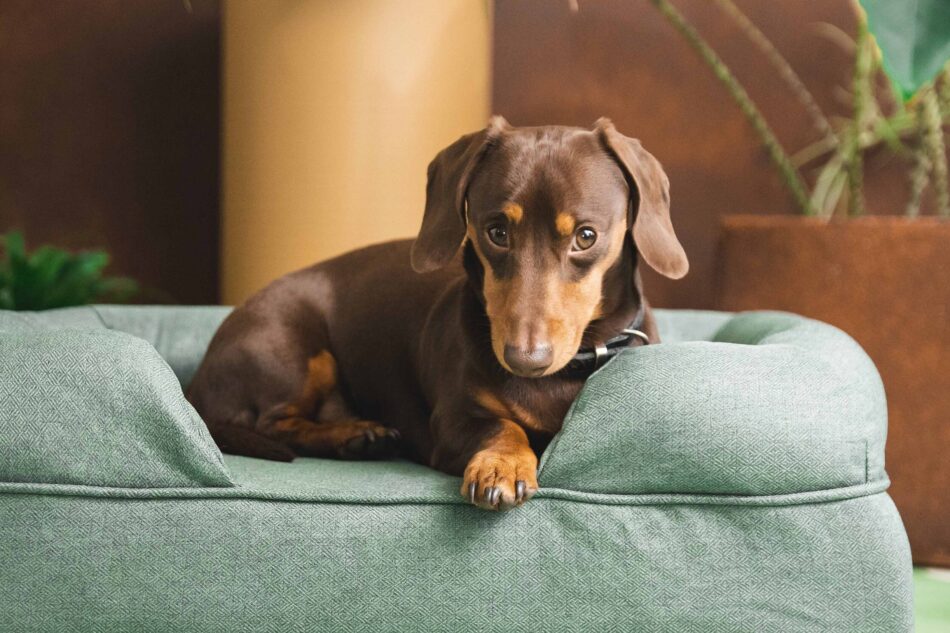
What colours do dogs see best?
The first question on your mind might be “what colours do dogs see best?”. Well, whilst the average person can see ‘all the colours of the rainbow’, from red to violet, dogs don’t have the same light receptors in their eyes as we do. To them, the rainbow is missing the red half of the spectrum. They can, however, see the yellows and blues. Indeed, a rainbow, to a dog’s eyes, is a series of yellows and blues of different shades.
What colours can dogs not see?
The ‘missing’ reds and oranges will appear to dogs as the various shades of light brown labelled ‘tan’. The greens in grass, trees and other plants are also tan to a dog. That bright red ball lying in the lush green grass may be very clear to you, but to your pet dog, the ball and the grass are both brown. Buy your dog a yellow or blue toy, however, and it will be as visible to your dog as it is to you.
Luckily for dogs, they rely on their sense of smell more than sight, so locating that ball in the grass won’t be so tricky, no matter what colour the toy is.
Can dogs see colours in their beds and toys?
As long as you don’t decorate your dog’s crate, Fido Nook or another cosy corner with reds, oranges and greens (which will all appear brown to a dog), they will appreciate a splash of colour. There’s nothing wrong with shades of tan either!
There is no evidence, either, that a dog prefers a blue or yellow ball to a red or green one. They will, however, be likelier to lose track of a light brown ball in the light brown grass.
How do dogs see colour?
In the earliest research into animal vision, dogs were taught to choose a disc that was a different colour from the others by touching the odd-one-out with their noses. If they chose the right one, they were given a treat – always a great incentive, as any dog owner knows! Sometimes, however, even the most well-trained dogs struggled to identify the odd-one-out. This told the researchers that the dogs were unable to distinguish between certain colours. When the discs were all red, apart from one green one, all the dogs could see were light browns!
Scientists are also able to use electroretinography to measure how animals’ eyes react to light. It was soon confirmed that key ‘cone cells’ responsible for registering colour in human brains were absent in dogs. Humans have three types of cone receptors, while dogs only have two.
Do dogs have good eyesight?
It may come as a surprise to many people that dogs, in addition to their poorer colour vision, cannot see as clearly as humans. Beyond a certain distance, everything becomes blurry for them. They have a genetic short-sightedness that prevents them from seeing distant objects clearly. The degree of short-sightedness varies between dog breeds, and it comes as no surprise to learn that so-called ‘sight hounds’ such as the Afghan Hound, Greyhound, Irish Wolfhound, Scottish Deerhound and Whippet have better eyesight than Chihuahuas, Pugs and Bulldogs. You can find out more about these wonderful breeds in the Dog Breeds Guide.
However, dogs’ eyesight comes into its own at dawn and dusk, when they can see just as well as they do in the daytime. Like cats, they have retinas that function well in poor light. The shape of their eyes’ light receptor cells and a reflective tissue layer at the back of the eye combine to create this low-light supervision.
And yes, that reflective layer is why dogs’ (and cats’) eyes always have a ‘red eye’ effect in photographs, and in car headlights. (Don’t worry though, we’ve got some top tips on How To Take Better Photos of Your Pets!). No wolf pack in a horror film would be complete without those glowing eyes!
Dogs also have a broader field of vision than humans, as their eyes are more on the side of the head than ours. This enables them to take in details that we would either miss or would be half-glimpsed things seen ‘in the corner of the eye’.
Why do dogs see less colour than humans?
Dogs evolved as hunters, just like modern wolves. On the one hand, this might make you assume that fantastic vision would be essential, as it is, say, in a bird of prey. However, the difference between a dog and an eagle is that the dog evolved to hunt at night, or dawn and dusk. A hunter doesn’t need full-colour vision at night, as colours simply disappear when the sun goes down. The key skill is to detect motion and to see things vividly in the half-light. In these respects, dogs’ eyes excel, and their eyes are super-sensitive to movement.
Humans, in contrast, evolved as daytime hunters, and that’s why we have better colour vision. At night, our eyes are hopeless without some kind of artificial light. At dawn and dusk, our brains have great difficulty identifying moving objects with certainty. That’s why ghosts, goblins and other supposedly supernatural sightings occur at these times of day – they are a function of our brain trying to busk in the half-light!
Human vision, then, contains more colour than a dog’s. However, we are certainly not top dogs when it comes to colour vision in the wider animal world. Many insects, including bees and butterflies, as well as many fish and crustaceans, have far more light receptors than we do and can see far more colours in the rainbow and the world around them.
But a dog’s vision is still perfect – for a dog!
We might see the world differently from our pet pooches, but what owner and pet can both agree on is that our furry friends deserve to live a life of luxury! Shop Omlet dog products today to find the perfect Dog Bed, Dog Crates and Dog Accessories for fido!
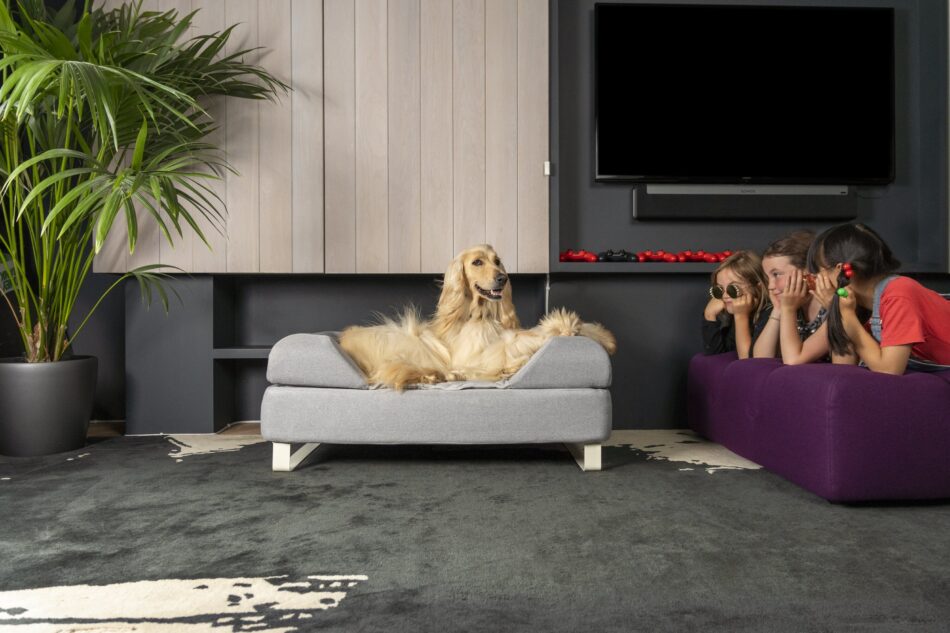
This entry was posted in Dogs
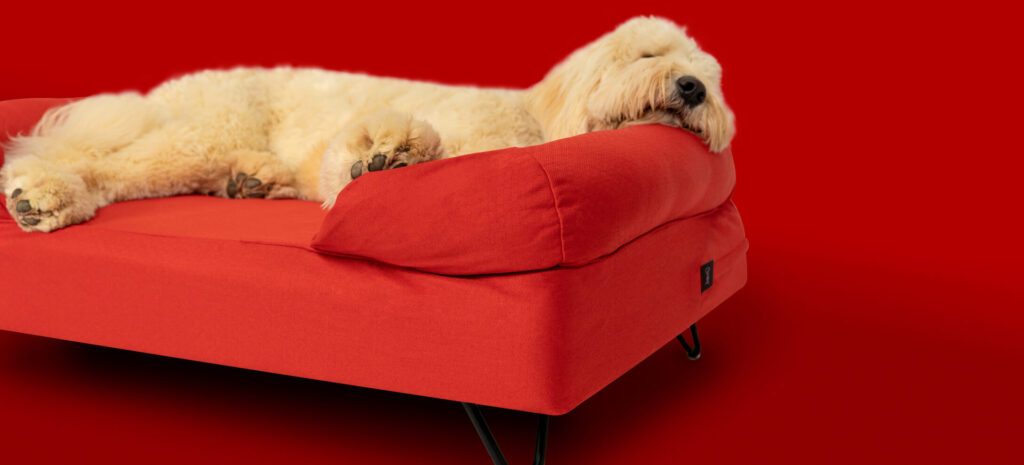
For years dog owners have been limited to beds in dull shades of brown, grey and black, but things are about to change! The Omlet Bolster Beds are now available in 15 amazing colours, ranging from a stylish Meringue White to an eye-catching Cherry Red, so there is sure to be one you will love.
Are you having trouble choosing? Why not try and match the colour of the bed to your dog’s personality? We’ve put together a quick quiz that will help you establish which colour Bolster Bed will be the perfect style for your pooch. Choose the answers that most resemble your dog, and add together the results at the end to find out which colour will suit them best!
What is your dog’s idea of a perfect day?
A. Snoozing on their bed not getting disturbed
B. Playing with the other dogs in the park
C. Going for a walk in the city sniffing outside shops
D. Digging a big hole in the garden
E. Hiking up a mountain
What’s your dog like with strangers coming to your home?
A. Doesn’t pay them any interest whatsoever
B. Jumps up and down and barks as soon as someone knocks on the door
C. Comes to have a look, but then goes back to whatever they were doing
D. Tries to get a belly scratch from anyone, doesn’t matter if they’ve never met them before
E. They will love to come and say hello, but can tell if the guest doesn’t want to play with them
What is your dog’s coat like?
A. Very, very fluffy
B. Long in some places, short in others – a bit of a mess really
C. Perfectly soft and smooth, we brush it every day
D. Short and easily maintained
E. They’ve got a lot of it, that’s all I’ll say
What is your dog’s favourite treat?
A. Dry duck fillets
B. Liver from the butcher’s
C. Ridiculously expensive organic dog treats we ship in from Luxembourg
D. Probably pizza, or anything else they’re not supposed to eat
E. Just normal dog treats will do
How does your dog feel about bath time?
A. They hate it!
B. Bath time? Are you supposed to wash dogs?
C. Loves it, especially at the groomers
D. They enjoy getting sprayed with the hose outside, but I wouldn’t trust them in my bathroom
E. They accept it, but they’re not a big fan
What is your dog’s favourite time of year?
A. Springtime, it’s warm but not too hot
B. Summer, they love going to the beach
C. They really don’t like snow, but apart from that they don’t really mind
D. Christmas, or any other time when the whole family is together
E. Probably autumn, they love jumping in the leaves
What would be your dog’s reaction to meeting a squirrel on your walk?
A. They would just look at it and keep walking
B. They would chase it up a tree, then try to climb the tree themselves
C. They would bark, but wouldn’t run after it
D. They would run after it hoping to make friends
E. They would look at me, asking for permission to chase the squirrel
If your dog was reading a book this summer, what type of book would it be?
A. A book about World War II
B. Something the other dogs in their doggy book club had chosen
C. A romance novel
D. The latest crime best seller
E. A Russian classic
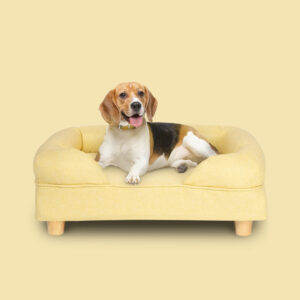
Mostly As: It is clear that your dog is as relaxed and easy going as dogs come; they are happy to go along with most things as long as they have a comfy bed to come back to for a snooze. A Mellow Yellow bed will be perfect for him or her to rest their head on after walks and play.
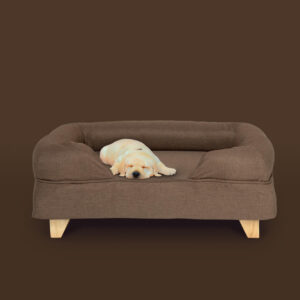
Mostly Bs: Your dog is a fiesty one, full of energy and play. We think that a Mocha Brown bed will be perfect for him or her. The soft and subtle brown colour will look great in any room of your house, and against whatever colour your dog’s coat is. As a bonus, the inevitable muddy paw prints front our dog’s adventures will be camouflaged on the bed!
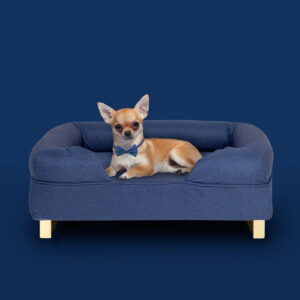
Mostly Cs: Midnight Blue is no doubt the colour for your dog. A stylish and sensitive soul, he or she will love relaxing against the calming blue after a busy day out on the town, and you will appreciate the way the dog bed adds a bit of colour to your home while still blending in nicely with the rest of your furnishings.

Mostly Ds: It’s clear that your dog will love a Lavender Lilac dog bed. They are a social creature who want nothing more than to spend time with their favourite humans, it doesn’t matter if it’s on a walk or lying in the corner of the kitchen while you’re having dinner. The relaxing dark purple colour will be great for when they are tired and need to wind down.
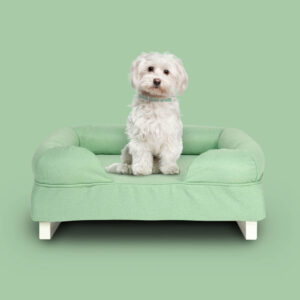
Mostly Es: Your dog is adventurous and has lots of energy, he or she probably never slows down, and is always happy to chase a ball in the garden or go for a run across the fields. You’re probably very similar, so we think a Matcha Green bed will be perfect for those rare times when they actually retreat to their bed to rest those legs.
This entry was posted in Dogs

If you share your home with a dog, it’s important to make sure the space is just as comfortable, hygienic and safe for them as it is for you. With these 5 dog-friendly interior tips for your home, you can be assured they’re staying safe, whilst your home stays in tip-top condition.
1. Materials matter
This is a simple idea but one that will save you a lot of cleaning time and expense in the long run. Opt for washable sofa covers wherever possible and steer clear of materials that can easily be scratched or will likely attract loose fur. Removing pet hair from your home can be done but it can also be a hassle, especially when it’s partially preventable. Some dogs will need grooming more than others, but brushing your dog regularly will help keep fur off furniture as well.
The same goes for flooring – choose something easy to mop or wipe, especially after a muddy dog walk. A machine-washable dog mattress like our Bolster dog bed will also help to minimize dirt and fur in your home. Simply unzip the cover and machine wash to maintain home hygiene and fresh sheets for Fido.
2. Styling your dog’s bed to your home
Your dog’s bed no longer has to stand out awkwardly in your home. Omlet’s Bolster dog beds are available in 15 bold colours, with a selection of limited edition prints from the Dog Walk and Gardenia collections to suit your interior style. Matching the colour of the dog bed to an accent colour in any room can be a great way to integrate their bed with your interior style, and really make it part of the home.
Plus, you can even raise your dog’s bed from the ground for an impressive touch with our range of designer dog bed feet. With the choice of 9 different styles of feet, there’s a dog mattress and feet combination for every home and dog. Curious for more interior styling tips? Find out whether your dog’s bed matches your decor.
3. Dog crate or stylish furniture?
A stylish dog bed needs a stylish dog crate to match. Dog crates are recommended by dog trainers and veterinarians for their many benefits. Not only do they offer a relaxing space for your dog to call their own, but they can also provide comfort and security, especially for puppies and anxious dogs when feeling overwhelmed.
Standard dog crates can be an eyesore in a beautifully decorated home, but we worked to curate a product that doubled as a doggy den and piece of furniture. Introducing the modern Fido Studio dog crate…Available in a Walnut or White design, you can even also an optional wardrobe with a handy storage unit for your dog’s toys and treats (or maybe clothes!). To finish the look, you can seamlessly slide in your Bolster dog bed to create the ultimate hideaway for your four-legged friend and a chic corner in your home.
4. Remove temptation
Most owners of excitable dog breeds will be well-practised in drink-saving reactions to prevent a whipping tail from causing carnage. It’s important to keep breakable or potentially harmful items like candles and glasses up high, not just for your sake but also for your dog’s safety. It’s wise to opt for higher side tables rather than lower-sitting coffee tables for tea and snacks to move the temptation of tasty human treats out of sight.
Dogs that are physically and mentally stimulated are less likely to be destructive in the home as well. Ensure that regardless of your dog’s breed, they’re provided with enriching activities in addition to their daily walks. You can exercise your dog indoors by playing games such as hide and seek, teaching your pup new tricks or even creating an obstacle course using materials you can find around the house.
5. Plants and pets
You can still enjoy house plants and a beautiful backyard when you have a dog but it goes without saying that you should first check they’re not toxic. This isn’t an exhaustive list but the following plants can be dangerous to dogs:
- Aloe vera
- Onion and garlic plants
- Ivy
- Bluebells
- Daffodils
- Grapevine fruits
- Mistletoe
- Holly
There are plenty of plant species that are also dog-friendly, though. These include but are not limited to:
- Magnolia bushes
- Rosemary
- Fennel
- Pansies
- Wheatgrass
- Sunflowers
- Lavender
It’s also worth noting that if your dog loves mud, you might also prefer to keep houseplants up out of reach of digging paws!
Omlet and your dog’s home
With Omlet’s range of dog products such as our easy-to-clean dog beds, stylish dog crates and dog toys, you can continue to build a wondrous connection between you and Fido, all while your and your dog’s home remains a safe haven and looks great too.
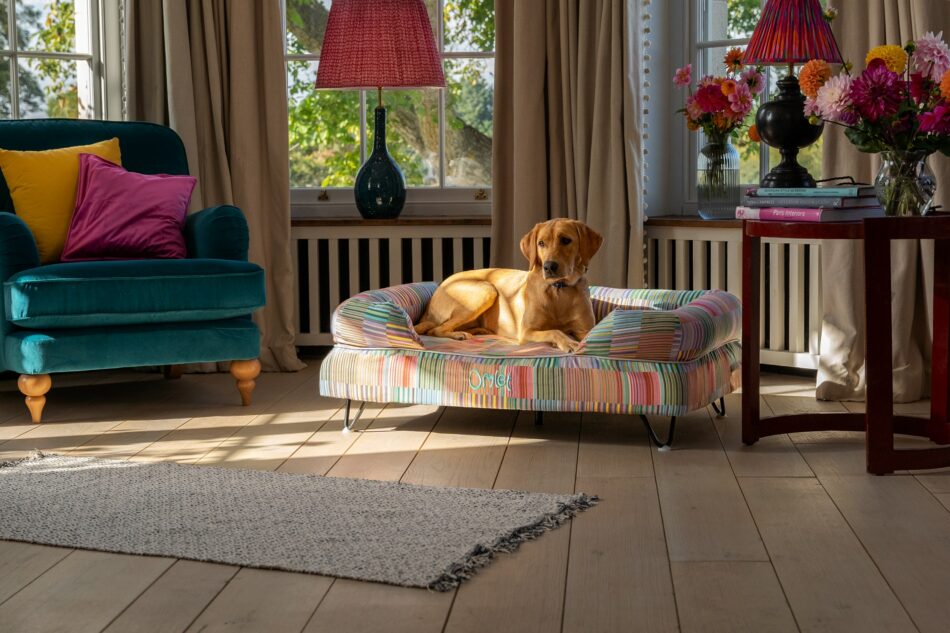
This entry was posted in Dogs
Sticking to an exercise regime is not always easy when you have to motivate yourself! This is why it can be necessary for some people to be accompanied in the process. And who better to be your sports coach than your dog!
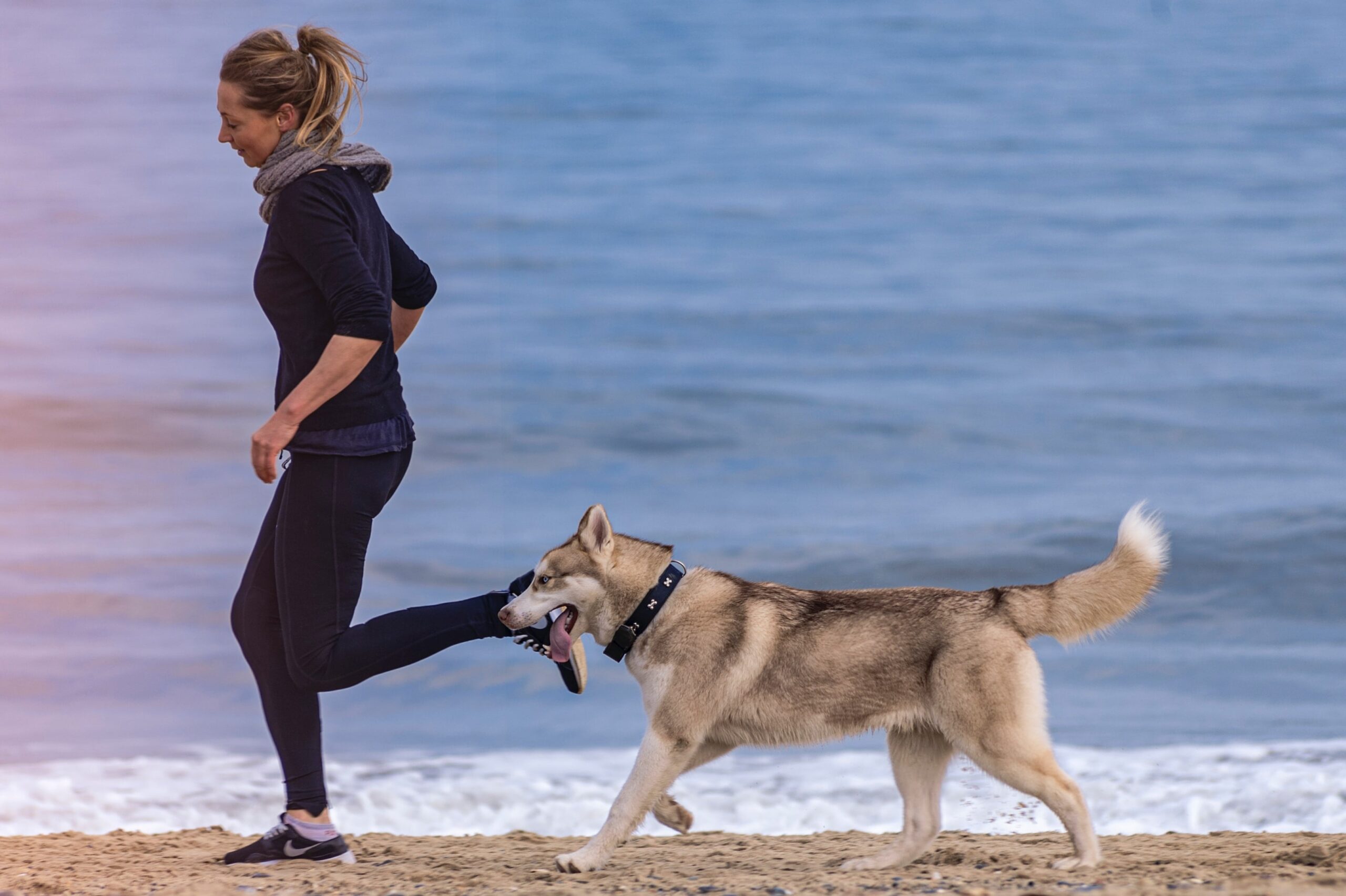
In a previous article, we saw that it is possible to do yoga with your dog. But what about getting your furry friend involved with other workouts?
In the current climate, where working from home has taken over from office work, finding the time and motivation to exercise and go outside has become a real challenge, and as a result many see a decline in their physical and mental health.
Lack of exercise motivation is harming our pets too. Various studies on pet health have found anywhere from 25% – 50% of dogs are considered overweight.
It has never been more important to do sport to feel good mentally and physically.
Resolutions and intentions are good, but actions are better. Deciding to turn off the TV and put on a pair of trainers is much more complicated than it sounds. Being accompanied in your training can be the ideal way to find the necessary motivation! Here’s why your dog is the best workout partner you could have…
5 Reasons to Get Out and Do Some Exercise With Your Dog
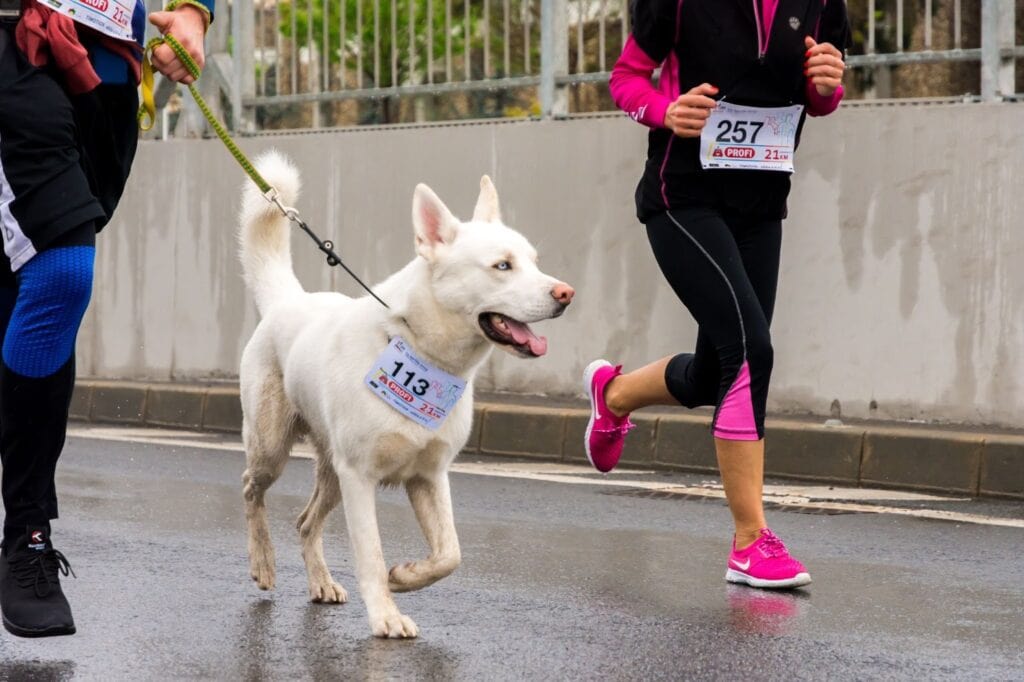
1. Dogs Are Very Energetic and Will Always Be Happy to Go Out
Most dog breeds are happy to go for a walk and are excited to have a run around. Going outside will always be welcomed, unlike like calling a friend to go for a workout and having them be unmotivated or in a bad mood, which will eventually demotivate you.
Dogs are habit-forming animals. If you regularly repeat the action at the same time for several days, it will become a natural ritual for your dog. This is ideal if you are demotivated but don’t want to disappoint your dog. You will still put on your trainers to please your little companion, imposing a certain regularity on you.
2. They Have a Regular Pace
As mentioned above, dogs function very much by habit. But beyond that, apart from when they are ill, they keep a certain pace and will always have a maximum of energy to expend.
Having an active pace allows you to optimise your training and get great results. It is much more fun to follow your dog’s pace than to watch your watch! If you are too slow, your dog will tend to stop. So don’t hesitate to find a pace that suits you both!
3. You Will Always Be Safe With Them
Running or walking alone is not always ideal in terms of safety! Sometimes it’s late in the day and the simple fact of being alone and feeling vulnerable, can be demotivating. The presence of your dog can therefore be a real comfort for your daily outings. A dog has all those senses that are in turmoil when he goes out, so it’s important to trust him, while also keeping an eye on them so that they don’t get hurt either.
4. They Are Always Available
The most complicated thing about doing sport with someone is finding the right time and agreeing on schedules. There is always someone who can’t or would rather be an hour earlier or an hour later than the right time for you! With your dog, this is not an issue. Your dog will always be available, happy, and motivated to come and roam around by your side.
5. They Don’t Ask For Anything in Return – Only Love and Good Times by Your Side!
Dogs will never ask for anything in return for doing sports with you. On the contrary, they will be happy to have spent some quality time with their owner! They are the best coaches you can have. They don’t yell at you (maybe a couple of barks) and you don’t spend money like you would with an experienced sports coach.
What Discipline Should I Do With My Dog?
There are many ways to exercise with your dog. It can be anything from walking to fitness training!
Have you ever heard of canicross? This discipline is an athletic sport where the owner is attached to his dog by a harness. The dog’s traction allows for long strides. It is a bonding moment between the dog and its owner through intense physical effort. This activity is open to all dogs!
Cycling with your dog is also possible! There is equipment that allows you to practice this activity safely with your pet.
Lewis Hamilton’s Best Training Partner Is His Dog!
Multiple F1 champion Lewis Hamilton has released a video of himself training with Roscoe, his dog:
Every time you go out with your dog, energy and good mood is guaranteed!
This entry was posted in Dogs
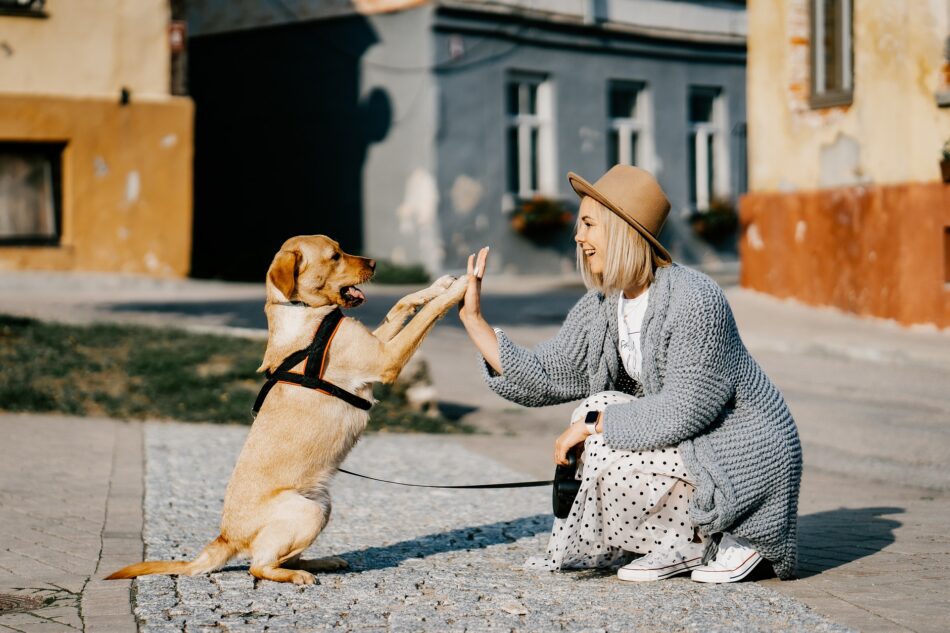 A dog who has been taught positive behaviour will be your best friend – fun, affectionate and reliable. It’s straightforward teaching your dog this canine version of positive thinking, but it won’t happen unless you lead the way.
A dog who has been taught positive behaviour will be your best friend – fun, affectionate and reliable. It’s straightforward teaching your dog this canine version of positive thinking, but it won’t happen unless you lead the way.
There are many ways of teaching a dog the rights and wrongs of living in the human world, and that extends to how they interact with other dogs and the world around them. In this article, we reveal the five rules of thumb for all dog owners – whether you’re training an adult dog or a puppy.
Encouraging Positive Behaviour in Puppies
Puppies recognise when we’re pleased or displeased. It’s all part of their instincts, and in the wild this instinct helped their wolf ancestors find their place in the pack very quickly. Learning their place in the big wide world is all about positive reinforcement.
1. Puppy Treats. Dogs of all ages love food and will put lots of effort into doing what you want them to do as long a there’s a yummy treat at the end of it! This means treat-based training can be used for everything from toilet training to basic obedience training and that all-important early socialisation. The message here is simple and timeless – do this right, and you’ll get a treat!
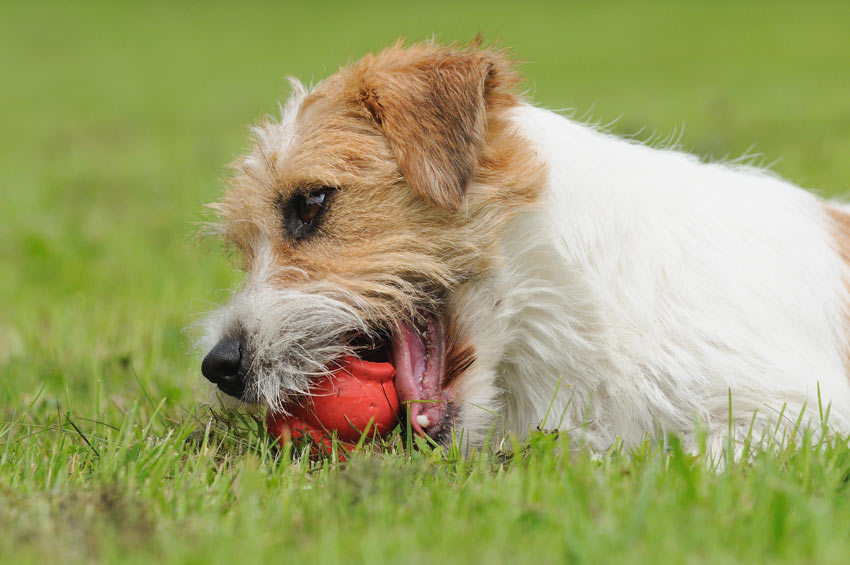 2. Affection. This is arguably even better than a food treat! Bonding with a puppy involves physical contact in the form of belly-rubs, back stroking and lots of gentle words of affection and encouragement.
2. Affection. This is arguably even better than a food treat! Bonding with a puppy involves physical contact in the form of belly-rubs, back stroking and lots of gentle words of affection and encouragement.
3. Fun and games. Tug-of-war, fetch and simply running around the garden with you are games that puppies love. What’s more, they strengthen the bond and love between you and your pet, and that’s the perfect groundwork for training and encouraging positive behaviour.
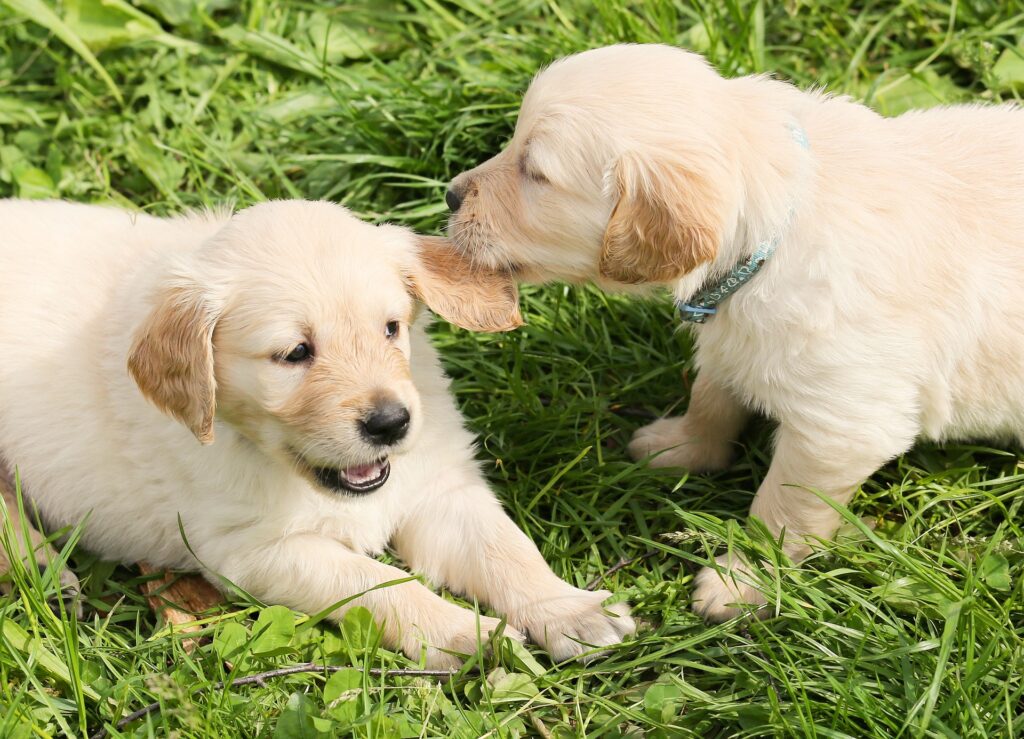 4. A trip to a favourite place. This is a great treat for dogs, and can be as simple as a trip to the park, or perhaps to a favourite street for an on-lead walk, or maybe a shop that sells some of those yummy treats! If this is being done as a reward for good behaviour, make sure your puppy knows it by telling them what a good boy/girl they are as you put the lead on or get into the car!
4. A trip to a favourite place. This is a great treat for dogs, and can be as simple as a trip to the park, or perhaps to a favourite street for an on-lead walk, or maybe a shop that sells some of those yummy treats! If this is being done as a reward for good behaviour, make sure your puppy knows it by telling them what a good boy/girl they are as you put the lead on or get into the car!
5. Puppy playdates. Starting these early is a great way to socialise your puppy, and that provides the basis for all the positive behaviour training. Young dogs love meeting each other – it’s not going to be a quiet morning out with your furry friend, but it’s one that will give him or her essential social skills.
Encouraging Positive Behaviour in Adult Dogs
The basics are simple. Positive reinforcement rewards a dog for good behaviour and ignores, rather than punishes, undesirable behaviour. Punishment will only lead to confusion and fear in your dog, reducing your chances of achieving the full benefits of positive-behaviour training.
Here are the five ways to make everything go smoothly, no matter which dog breed you have.
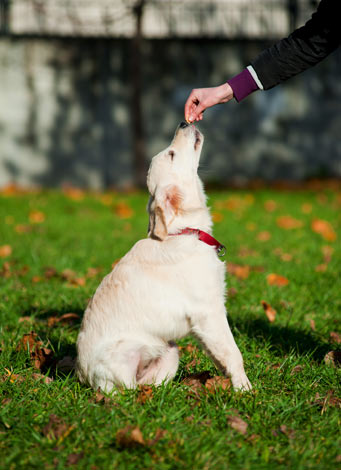 1. Keep it simple. One-word commands are better than complex ones. We’re talking here about sit, come, sat, etc. Save the long-winded exchanges for praise and affection! A training session based on simple commands and treats is a great start for encouraging positive behaviour. Which brings us to…
1. Keep it simple. One-word commands are better than complex ones. We’re talking here about sit, come, sat, etc. Save the long-winded exchanges for praise and affection! A training session based on simple commands and treats is a great start for encouraging positive behaviour. Which brings us to…
2. Treats. Just like puppies, adult dogs will be well and truly ‘reinforced’ if treats are involved. Some breeds are more food-obsessed than others, but all types of dog will quickly learn that good behaviour results – at least in the early days of training – in a yummy treat.
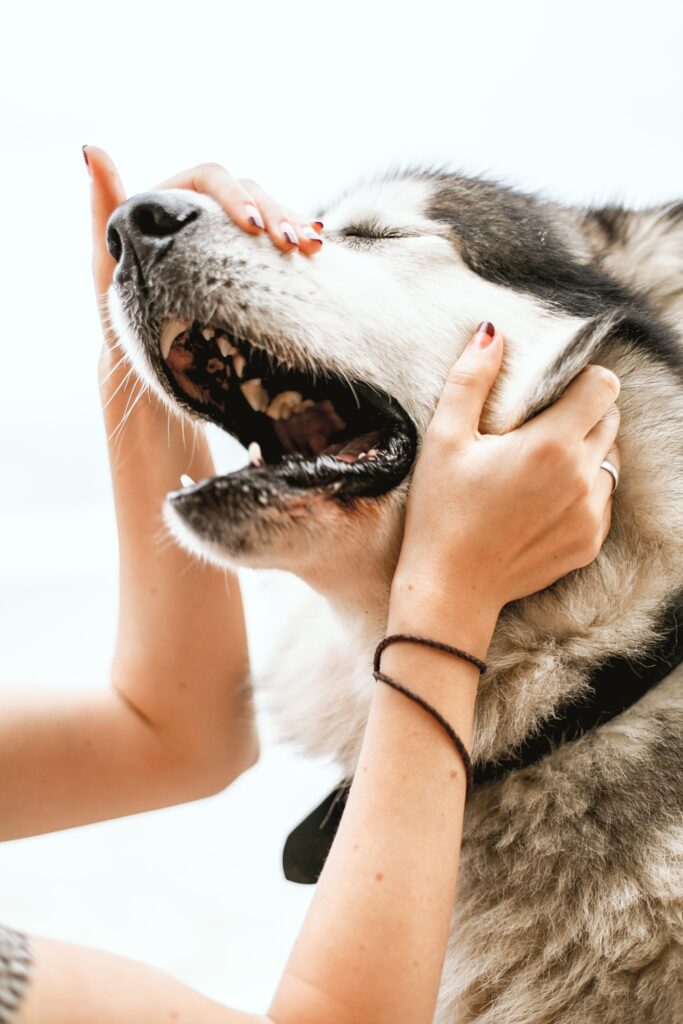 3. Quality time. Dogs are social animals by instinct, and they will thrive in human company. Once you and your pet are the best of friends, the positive behaviour training will be much easier. If there’s any nervousness or standoffishness in your dog, they will be less able to take on board the things you’re trying to teach them. So, keep up the contact, and play with them every day.
3. Quality time. Dogs are social animals by instinct, and they will thrive in human company. Once you and your pet are the best of friends, the positive behaviour training will be much easier. If there’s any nervousness or standoffishness in your dog, they will be less able to take on board the things you’re trying to teach them. So, keep up the contact, and play with them every day.
4. Make it fun. A long session of ‘sit, lie down, stay, come’, etc. will soon become boring for a dog. A short session of command-based training followed by a bit of fun, however, will make your dog look forward to the sessions every time. After five or ten minutes (depending on your dog’s stamina), round off the proceedings with a game or a walk. The dog will soon realise that “If I do this tricky bit, I get that fun bit afterwards!” It’s a trick that works just as well with young children – “Finish your homework, and then we’ll go out on the bikes!”, that kind of thing.
5. Get everyone involved. Once your dog has grasped some of the basics, other members of the family, or friends, can reinforce the good behaviour by running through some of the training with your dog. Your pet will then learn that positive behaviour is part of their general lives and applies in all situations with all people.
This latter point is the ‘quantum leap’ for a dog – the idea that positive behaviour extends beyond their immediate owner to the big wide world around them. Getting them to this point takes time, there’s no doubt about that, and some breeds are a lot easier to train than others. However, once the work has paid off, you’ll have a doggy best friend you can be truly proud of!
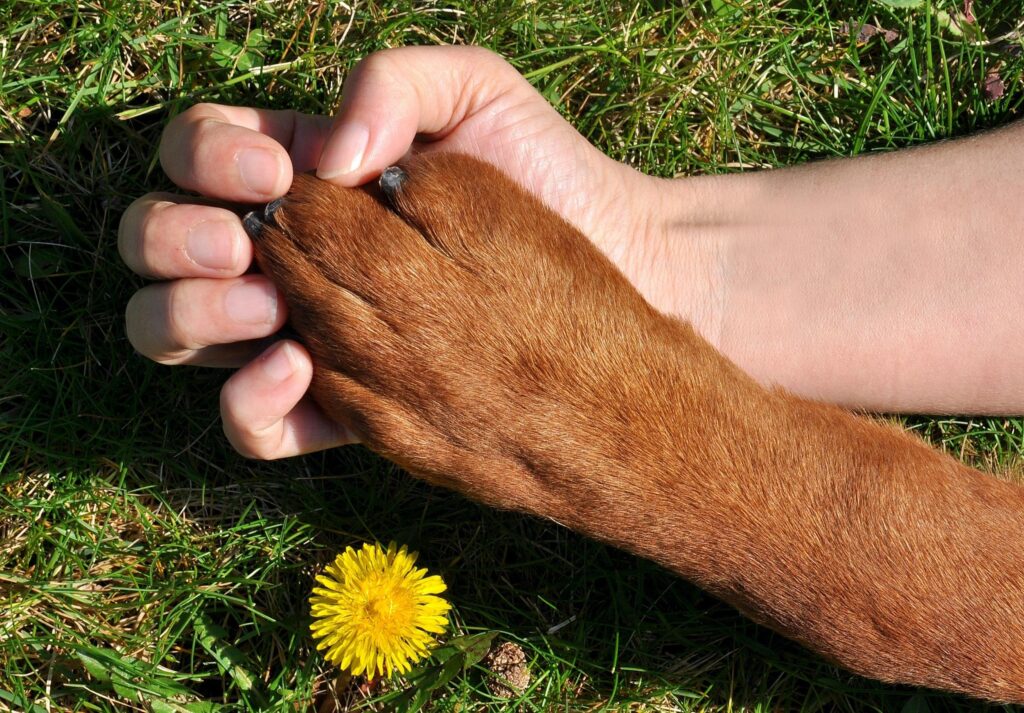
This entry was posted in Dogs
Pride of Omlet series is a collection of amazing stories which shine the spotlight on extraordinary pets and share their selflessness, bravery, talent and compassion with the world.

We have been lucky enough to collect some wonderful stories of your extraordinary pets and share them with you for 10 weeks! Here is a summary of the stories that you can read again and find directly on our Blog.
Pride of Omlet: Stand Up for Disabled Animals
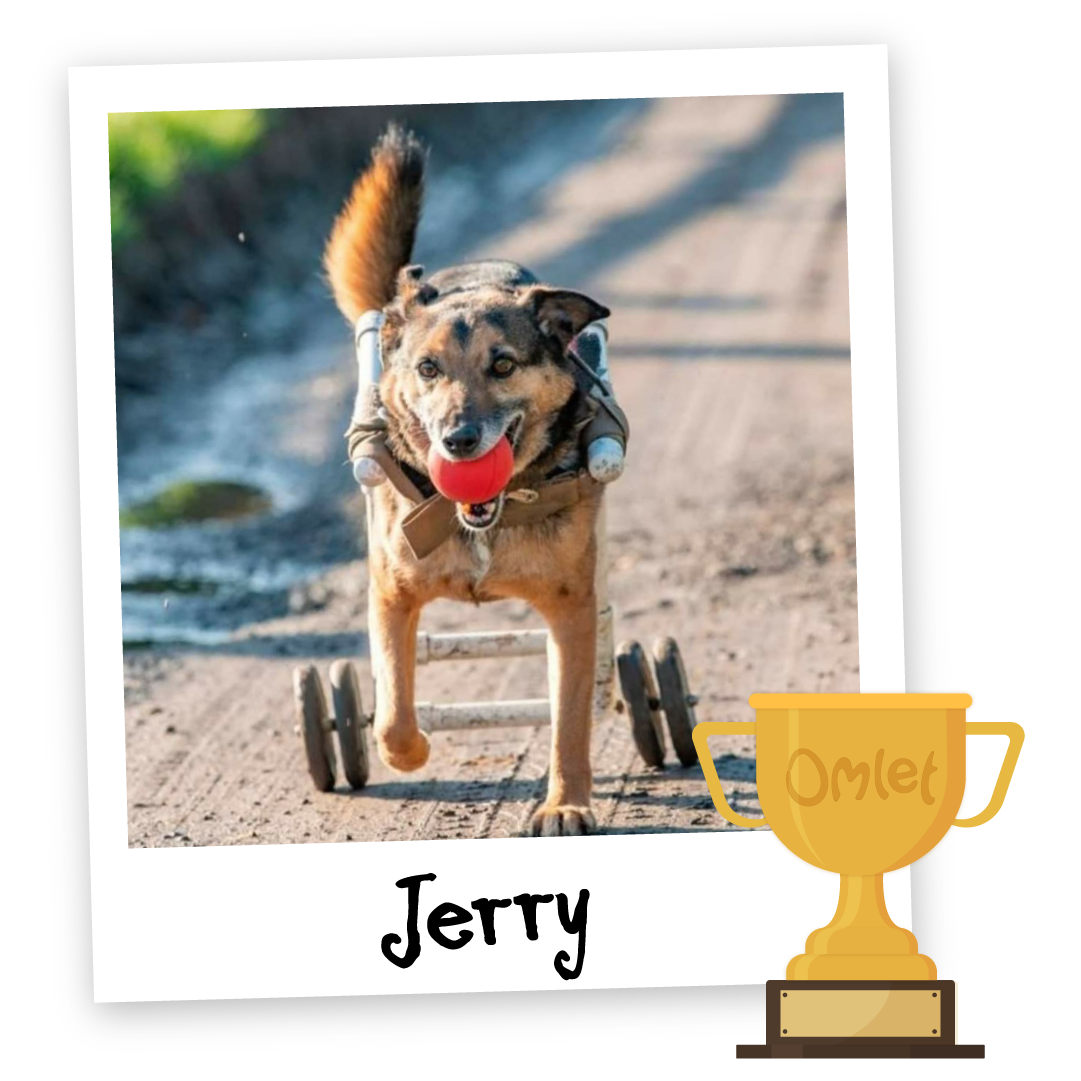
Jerry’s a cheeky, playful and boisterous rescue dog from Romania who can do a handstand! He landed on his feet when Shena gave him a home and inspired her to start a rescue centre specialising in disabled animals. Read the story here!
Pride of Omlet: The Constant Companion
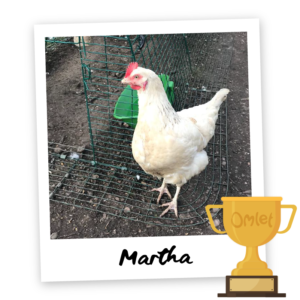
Martha’s humans Nicola and Ben bought chickens to bring joy to Julia, their mother who they cared for at home. The family could never have imagined that a chicken would become a caring companion to Julia in the advanced stages of dementia. Read the story here!
Pride of Omlet: Free Support
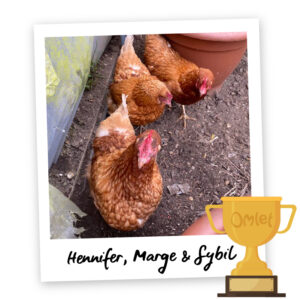
Once caged battery hens, Hennifer Marge and Sybil now work free-range with their human Jonathan, transforming lives for offenders at the Rosemead Project. Jonathan (support worker and chicken champion) believes the hens have the power to unscramble tricky social situations. Read the story here!
Pride of Omlet: A Perfect Match
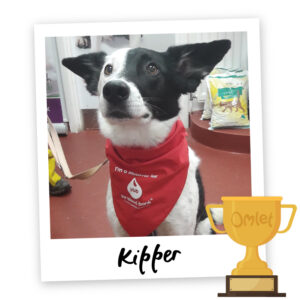
On paper, Kipper wasn’t exactly what Angela wanted. After years of behavioural challenges, he’s become the best-behaved blood donor and saved over forty dog’s lives. Kipper’s turned out to be Angela’s perfect match. Read the story here!
Pride of Omlet: Teachers Pet
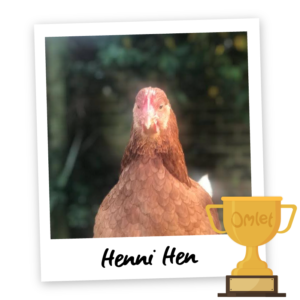
Henni Hen is a teaching assistant by trade. A cute and cuddly chicken who loves children. She follows in the footsteps of her bubbly humans, Hamish and Verity. Read the story here!
Pride of Omlet: Mipit Makes Sense

Mipit is a Mental Health Assistance Dog for his human, Henley. Mipit keeps Henly alive and independent. Who wouldn’t love a dog that can put out your recycling, answer your phone, and be your best friend, come rain or shine? Read the story here!
Pride of Omlet: Perfect Peaky
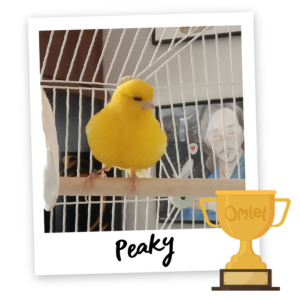
At the tender age of one, Peaky is already a retired filmstar. He had lived in a cage his whole life, released only to perform. When Joana and Fergus took him home, he was a fluffy, yellow bundle of nerves. But they are determined to help Peaky, their cute little canary companion, to come out of his shell. Read the story here!
Pride of Omlet: Saving Sophia’s Life
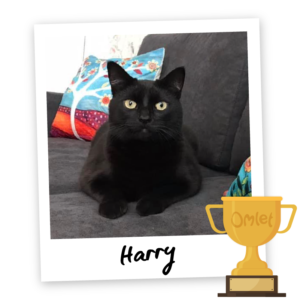
When you’ve grown up with animals, home isn’t home without a pet. Bringing Harry home was lifesaving for both him and his humans, Sarah and daughter Sophia. Harry has a special gift. He’s a unique epilepsy monitor, and he’s saved Sophia’s life countless times. Read the story here!
Pride of Omlet: Buster’s Beard

Buster was destined to chase balls on the beaches of Barry Island. He’s a lovable labradoodle with big brown eyes and a long beard. A thinker with a playful nature, he’s co-authored a children’s book with his human Natalie to bring Autism Awareness to all. Read the story here!
Pride of Omlet: Brave Bunnies

It’s hard to describe how frightened Pixie the rabbit was when the RSPCA rehomed her with an experienced rabbit owner. Eighteen months on, cheeky little Pixie lives in the lap of luxury and is learning to be loved by her adoring human, Wendy. Read the story here!
This entry was posted in Budgies
David is a long time lover of dogs since he was young. He loves most dogs but his favorite are golden retrievers. He also runs his own blog at dogdesires.co.uk where he helps other dog owners with advice and dog product reviews. In this article David gives 5 considerations for finding the right dog breed for you.
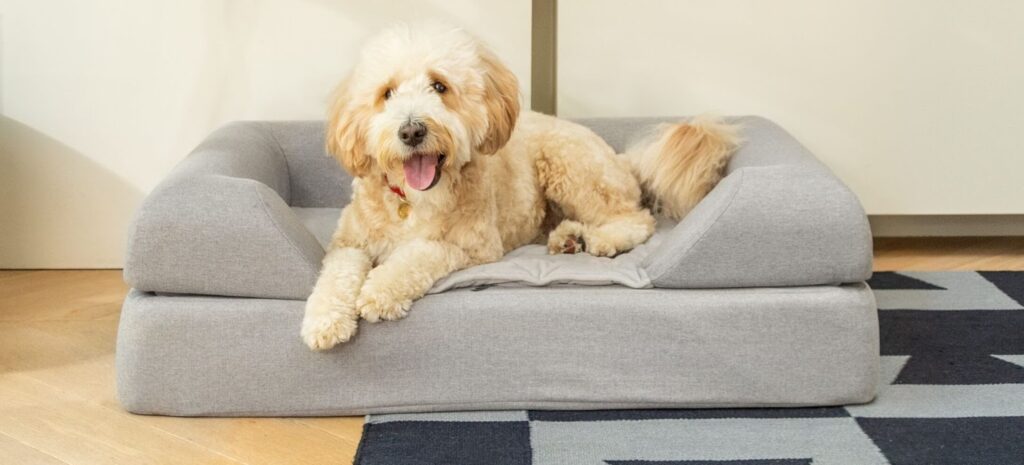
There are several things you need to consider in order to choose the right dog breed for you. Depending on your lifestyle, certain breeds are more suited for you because of their size, maintenance, activity level, and more.
Read on for more detail and by the end of this article, you will have the insight needed in order to choose the ideal dog breed for you.
Size
Some people already have their hearts set on whether they would like a huge dog or a tiny one. Those who aren’t sure or that bothered about it tend to go for medium-sized dogs.
One thing that is an important deciding factor regarding what size breed is best for you is your living conditions. Naturally, large dogs need a lot of space so if you’re living in a relatively small and cozy apartment you would not want to get a Great Dane. They especially need more room because of their tails, so that they can wag without injuring anyone or damaging anything.
That being said, living in an apartment does not automatically mean you must get a toy dog. Some dog breeds are known for being adaptable to living in apartments, such as the Sheepadoodle. If you’d like to read more about this breed, you should check out this breed guide here – Sheepadoodle.
Keep in mind that small dogs are more vulnerable, in the sense that you need to get used to always looking down to not step on them. Smaller dogs also tend to be more sensitive to the cold so they need a little help staying warm.
Maintenance
With maintenance comes many things. Firstly, some breeds have fur that needs a lot of maintenance to stay healthy. Dogs with short fur are easy to take care of, such as Springadors, as they just need brushing every now and then. But dogs with longer fur, curly or otherwise, need to be brushed more frequently as well as trimmed and more. So, you will need to dedicate more time to these dogs.
Another factor is the expense. The larger the dog, the more food you need to buy and larger dog beds, etc.
Lastly, there’s training. This is very important, as some dog breeds are known for being more well-behaved and thus easier to train. Smaller dogs tend to have something that is referred to as ‘small dog syndrome’, which is when a small dog thinks that they are bigger than they actually are and therefore have more of an attitude. This can cause them to be more stubborn when it comes to training. For example, pugs are known for being naughty and for being stubborn.
Another good thing to remember is that if you let a large dog breed behave as a lap dog from a young age, they will continue to try and walk all over you when they become adults – and I mean that literally, not figuratively.
Also, dogs with long and floppy ears need frequent and thorough cleaning as they are more prone to ear infections. Moreover, certain dogs are more likely to drool than others such as Bloodhounds and Mastiffs.
Activity Level
If you get a hunting dog breed, such as a Labrador, Beagle, Foxhound, etc., then you can expect this dog to have a high activity level. Even crossbreeds with a hunting dog parent tend to inherit the genes and have a lot of energy.
Most dogs do not destroy things and dig up holes in your yard without a reason; energetic dogs, in particular, need much more exercise and become bored and destructive without it. Mental exercise, as well as physical, is a must too.
No matter the breed or size though, all dogs need routine exercise. You will need to commit to going for walks twice a day and if you’re looking for a dog that you can jog with then a Weimaraner or German Shepherd are great choices.
Personality
This one goes without saying for some people, but seeing as certain breeds are known for having certain personalities, we can use this to our advantage. For those of you who are looking for a cuddly and loving dog, Retrievers, Greyhounds, Irish Wolfhounds, Old English Sheepdogs, Pitbull Terrier, and King Charles Spaniels are known to be some of the most affectionate dog breeds.
Restrictions
Unfortunately, depending on the country and state you’re in, some breeds may be banned.
To give an example I would like to name Pit Bulls and Rottweilers. Both of these dog breeds are sadly banned in many states, the reason being that they face stigmas as ‘dangerous’ and ‘aggressive’.
Pit Bulls and Rottweilers are banned in the following states respectively:
Alabama, Alaska, Arkansas, California, Colorado, Delaware, Florida, Georgia, Idaho, Illinois, Indiana, Iowa, Kansas, Kentucky, Louisiana, Maryland, Massachusetts, Michigan, Mississippi, Missouri, Montana, Nebraska, New Jersey, New Mexico, New York, North Carolina, North Dakota, Ohio, Oregon, Pennsylvania, Rhode Island, South Carolina, South Dakota, Tennessee, Texas, Utah, Washington, West Virginia, Wisconsin, and Wyoming.
Personally, I would like to note that I have had several dogs of both of these breeds and none of them ever showed any signs of being aggressive or dangerous in any way. They were sweet, kind, and several of the Rottweilers were protective over me.
I do not believe for a second that aggression can be inherited in genes, but rather it comes about when a dog is being raised wrongly.
This entry was posted in Dogs
 20.05. – National Rescue Dog Day! We would like to use this special date to address animal welfare, shelters, the hard work they have to face every day and of course everything about the topic of adoption.
20.05. – National Rescue Dog Day! We would like to use this special date to address animal welfare, shelters, the hard work they have to face every day and of course everything about the topic of adoption.
Every year, approximately 3.3 million dogs enter animal shelters nationwide in the US and are in dire need of being adopted. With this warning number, it’s important we consider our local pet shelters when welcoming a new family member. We’ve interviewed an animal shelter which has a tough job to do. Let’s find out more about this work and the process!
The “Einfach Tierschutz e.V.” is a German non-profit animal welfare association founded in 2016 with the aim of helping street dogs where the need is greatest. This is particularly the case in Eastern and Southern European countries, where especially street dogs have no rights and face harsh times. Einfach Tierschutz stands up for those animals in need, in areas such as Romania.
“Everyone has a purpose in its life, a reason for being in the world. My purpose is to save dogs.”
Jens Waldinger, Head of Einfach Tierschutz
1. Omlet: Can you please tell us a bit about the company: how many pets do you care for? What does the work at an animal shelter involve and what does a typical day at your shelter look like?
 Einfach Tierschutz: Einfach Tierschutz e.V. is the owner and operator of two animal shelters in Braila, Romania. In our “Phoenix Shelter”, where we take care of about 400 street dogs, just recently also cats, and try to find them a new home. They get medically treated and socialised every day in an area of 10,000 m².
Einfach Tierschutz: Einfach Tierschutz e.V. is the owner and operator of two animal shelters in Braila, Romania. In our “Phoenix Shelter”, where we take care of about 400 street dogs, just recently also cats, and try to find them a new home. They get medically treated and socialised every day in an area of 10,000 m².
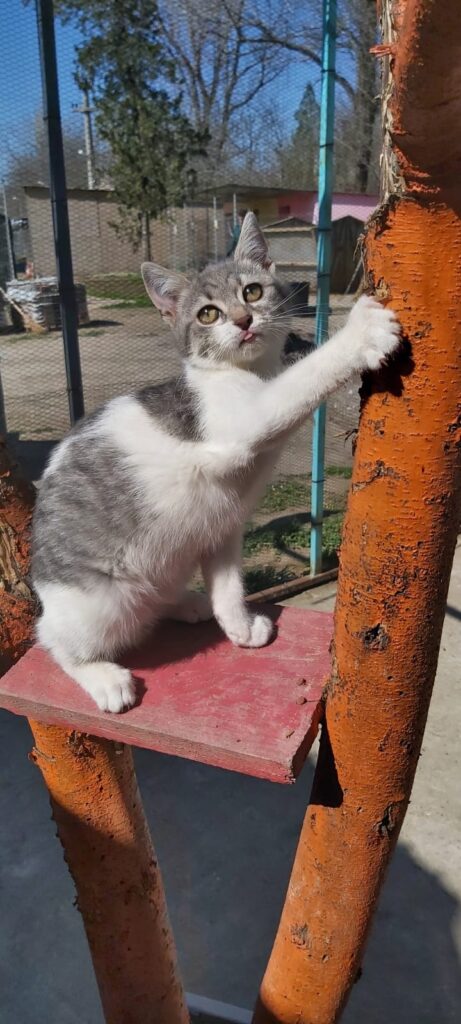 Since spring 2020, we have been running our second shelter especially for puppies, the “Phoenix Puppy Shelter”, where up to 50 puppies and young dogs are fostered, cared for and prepared for placement in a family on an area of 2,000 m². In addition, we were able to realise a long-cherished wish in 2020 with the construction of the cat house on our premises and thus also provide our cats with safe and species-appropriate accommodation.
Since spring 2020, we have been running our second shelter especially for puppies, the “Phoenix Puppy Shelter”, where up to 50 puppies and young dogs are fostered, cared for and prepared for placement in a family on an area of 2,000 m². In addition, we were able to realise a long-cherished wish in 2020 with the construction of the cat house on our premises and thus also provide our cats with safe and species-appropriate accommodation.
We have employed an average of 6 staff members in the shelters of Romania, who work in shifts so that someone is present at all times. Additionally, we have a driver and an office worker as well as the shelter manager on site. The tasks of the staff are mainly the support and maintenance of the dogs as well as night watch and administrative activities.
Our team consists of trained and certified dog trainers, professionals and experienced foster homes, and we are in contact with vets/veterinary assistants. We also work closely with the veterinary office, registering both our transports and our foster homes there, and can provide proof of the correct written documentation on transports, dogs and adopters at any time.
Our office is located in Germany, from where we coordinate all of the association’s activities. Various volunteer teams work under our guidance in the areas of social media, pre- and post-inspections, placements, adoptions, flea market and planning of the shelter travels.

Jens Waldinger – Head and Manager of the shelter
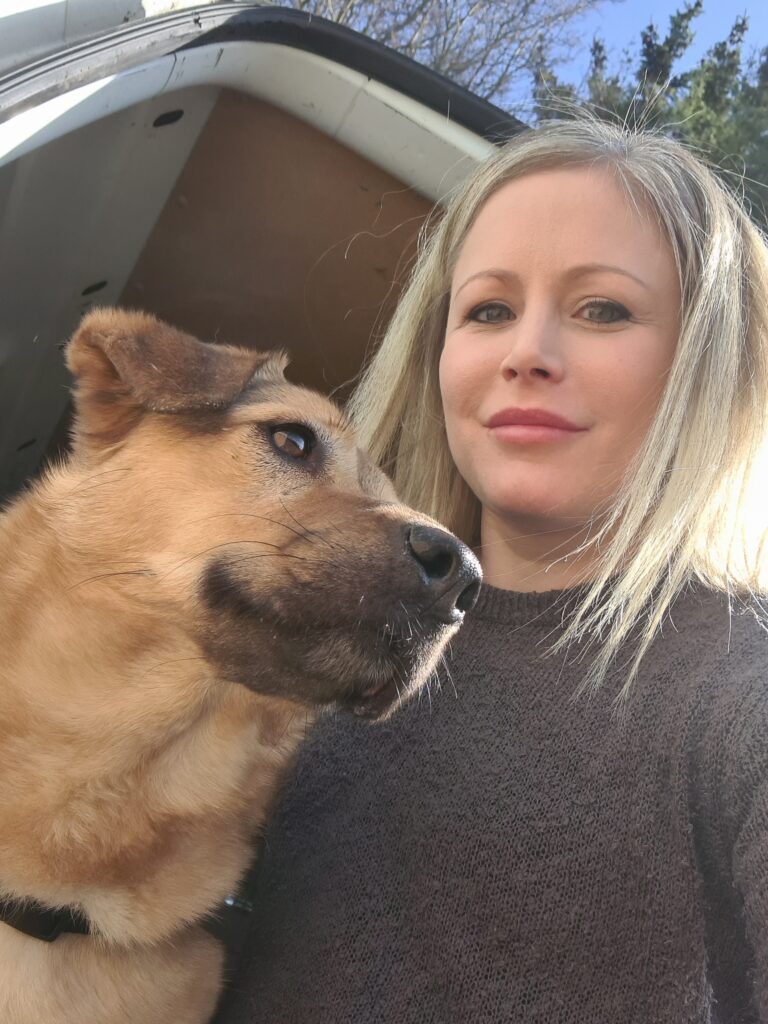
Sarah Goetschel – Head and Manager in DE with foster dog Puschi (Heart)
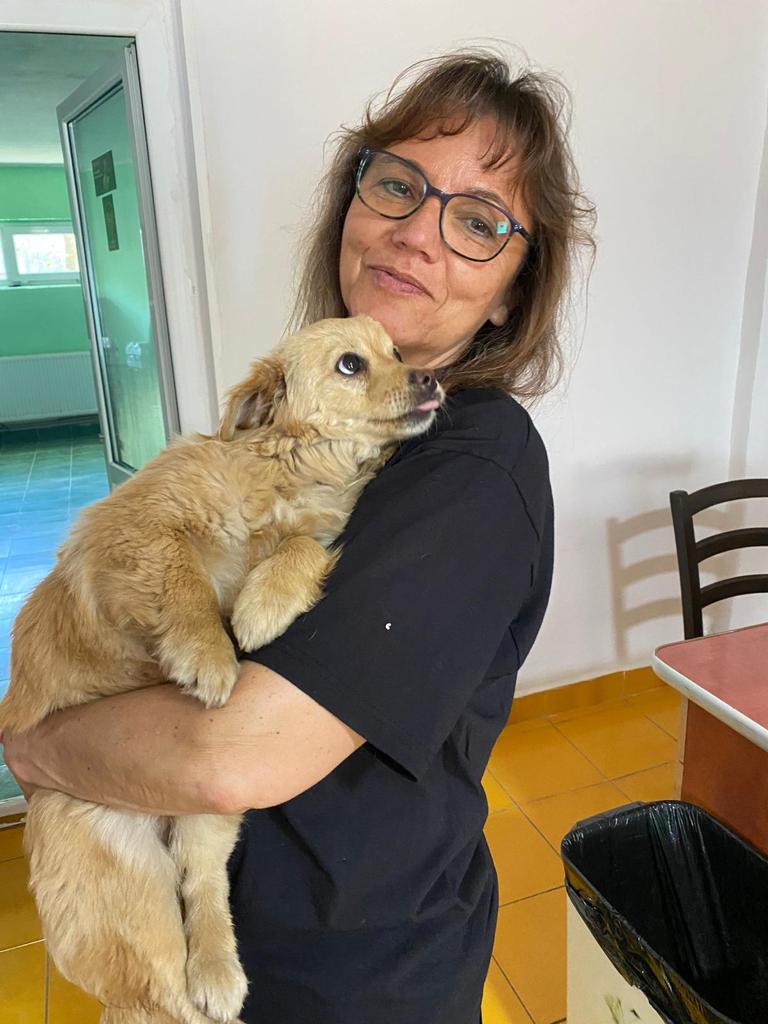
Carmen Salcedo – Dog Management in Braila, Romania
A primary goal of our work is to rehome as many dogs as possible and place them into loving and safe homes. We also provide a licensed transporter in order to transport our dogs and cats in our own equipped vehicles from Romania to their future families in Germany, Austria or Switzerland.
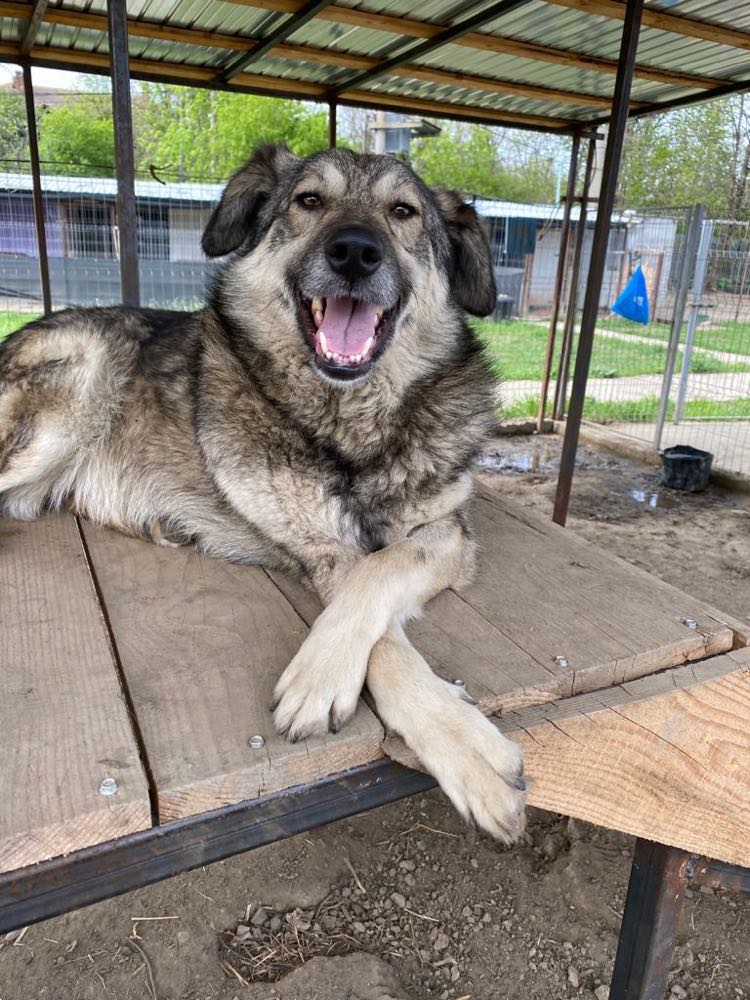
Lutz (top model, top dog)
We provide dogs, which are not suitable for a life as a family dog or for any other owner, a permanent safe refuge in our shelter. Here, they will have a better life without hunger and diseases, and are not exposed to the bad and cold weather conditions in Romania, especially during the winter season – just a stable and stress-free life with their conspecifics.
Another goal for us is to make an important contribution by helping to control the reproduction of street dogs and cats through regular castration campaigns at our expense, and to bring about a change in the way the local population thinks about handling this issue. Due to the uncontrolled multiplication of street as well as house and yard dogs of the inhabitants, thousands of unwanted puppies end up on the streets or in the municipal animal shelters every year, which are allowed to euthanise these dogs after a period of two weeks if they are overcrowded. We also intervene here and are happy if we can take some of these dogs with us.
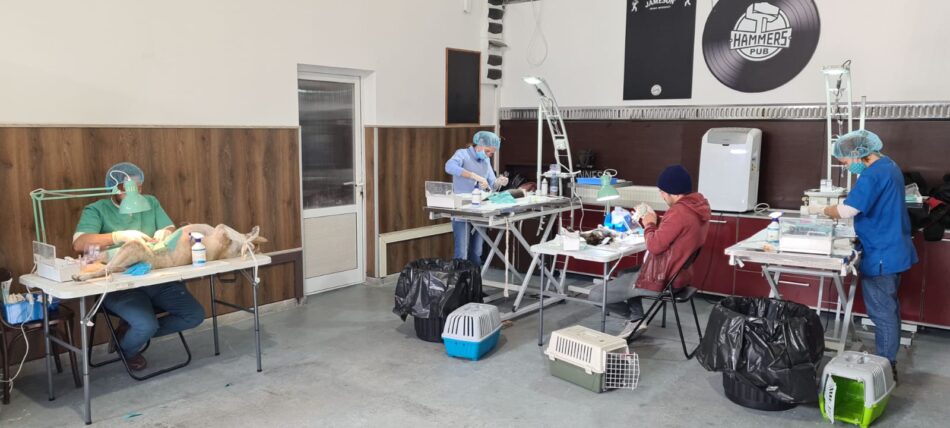 Castration Marathon in Baraila, Romania
Castration Marathon in Baraila, Romania
2. Omlet: What differs Einfach Tierschutz from other animal rescue organisations?
Einfach Tierschutz: First of all, the Einfach Tierschutz is a German association which is not only active abroad, but also runs its own animal shelter abroad. We do not solely rehome our dogs in Germany, but also in Switzerland and Austria. But mostly, we stand out because of our size: since we have started this organisation, we now have over 8,000 members who support us. We have succeeded in convincing many people of our projects and know-how in just a few years, and with their support through donations, memberships, sponsorships, etc. we have been able to invest wisely.
We also offer our members the experience of travelling to our Phoenix Shelter in Romania to actively support us there and to see for themselves, what our team’s workload is and what we have achieved in this short period of time so far with all the donations and membership fees we receive from them.


“There is a before and an after in my life: Before the trip to the Phoenix Shelter and after the trip, because since then I know what it is worth living and fighting for every day: “my” dogs there in the shelter. I may be back in Germany, but my heart has stayed there with the dogs.”
– Association member a few weeks after returning from a shelter trip
We offer our members the opportunity to follow our work on a daily basis via our Facebook members’ group, provide pictures and video material from our shelter and thus allow every member to participate in current events. We also offer the opportunity to network with other members at more than 40 regulars’ tables and to plan joint activities such as information booths or fundraising campaigns.
 We recently had our first big tombola where our members purchased lots from us in order to have the chance to win many great prizes from generous donors. The proceeds went directly to the shelter.
We recently had our first big tombola where our members purchased lots from us in order to have the chance to win many great prizes from generous donors. The proceeds went directly to the shelter.
We are constantly working to improve our standards and ourselves professionally, in line with our ideas of good, sustainable animal welfare so that we can continue to grow and help as many animals as possible. In this way, we are always trying to maintain a balance between possible improvements and new projects or extension of our activities. We are very motivated and hungry to go further, to achieve even more.
3. Omlet: What do you like about your work? What is most rewarding?
Interviewee: Every little success reminds us why we do all this. Whether it is rescued dogs that we are able to bring into the safety of our shelter, whether it is animals that are brought back to life after serious illness or injury, whether it is once fearful and shy dogs that we have been able to socialise to such an extent that they can now enjoy their lives in a family and happily romp across green meadows… all these individual fates that are given a chance for a better life through our work is what makes the work worthwhile for us!
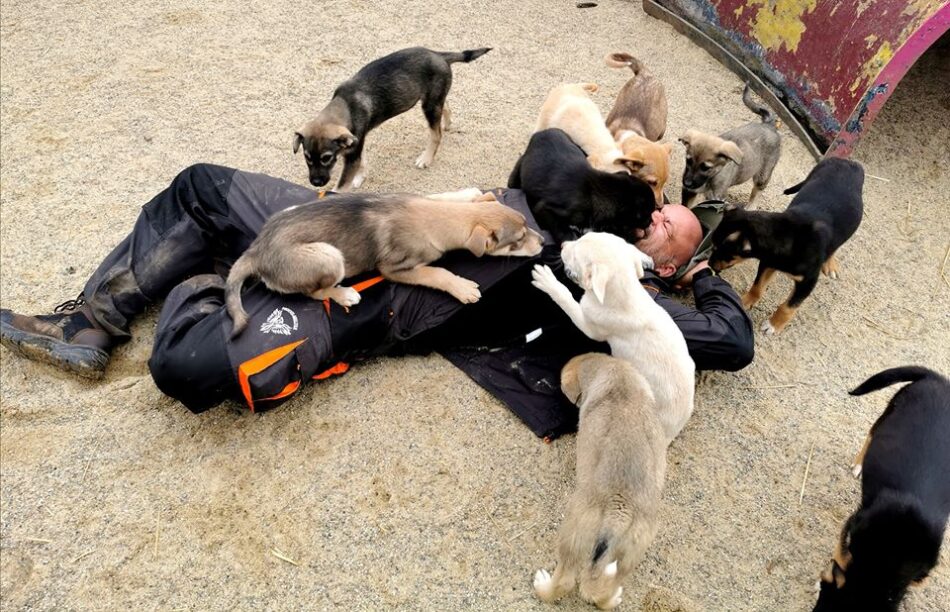
4. Omlet: Adoption vs. Purchase – what is the biggest challenge?
Einfach Tierschutz: From our point of view, the biggest problems are the mass breeding of pedigree dogs, while thousands of dogs are waiting for a loving home in the animal shelters. In particular, the illegal breeding and illegal transfer of puppies from abroad, which are then sold cheaply via various online portals by professional traffickers posing as private individuals, is a thorn in the flesh. As humans, we have a responsibility towards our fellow creatures and as long as the streets are full of unwanted animals that reproduce uncontrollably, suffering from hunger and diseases, we believe it is irresponsible to continue with breeding dogs.
Unfortunately, many people lack a sense of responsibility and foresight. Many hardly think about what it means to give an animal a home for the next 10 to 20 years and also give up far too quickly when the animal becomes “uncomfortable” for whatever reason. The decision to give up an animal is taken ever more quickly and lightly these days…
5. Omlet: Speaking of adoption – What is important to you when looking for the right adopters, what should a potential adopter fulfil? What challenges or difficulties can you face when a shelter dog moves into its new home?

Floki (left) has also found a new best friend for life through his new home
Einfach Tierschutz: It is very important to us that the family and the dog are well matched, which is why we work with the dogs on site to get to know them better and assess them as well as possible. Our employees in Romania also help with socialising the dogs when we are not around. Nevertheless, though we try our best here, we cannot predict what the dogs’ behaviour will be like when they arrive at their new homes. Several factors will play a role. With the new environment, new people and maybe other companions it is hard to make a binding statement about it but so far, we mostly received positive feedback from the adopters.

Annett has finally found her family after waiting for such a long time
A dog from another country is always a bit of a “surprise package”. They are not familiar with our everyday lives and need time to get used to it. Through plenty of interaction with volunteers, outdoor runs and play sessions as well as walks, we try to keep the dogs as busy as possible and introduce them to new things, but there is no comparison with the life they will experience with their future families. Some of them have never seen a leash or worn a collar or harness before, they are often unfamiliar with stairs, cars, bicycles, pedestrians etc. Some dogs are already house-trained when they move in, others need days, weeks or even months to train. Domestic or human smells and noises are often unfamiliar to them, and while one dog may be happy and react inquisitively, another may still feel anxious and need more time to realise that everything is just about to change for the better.
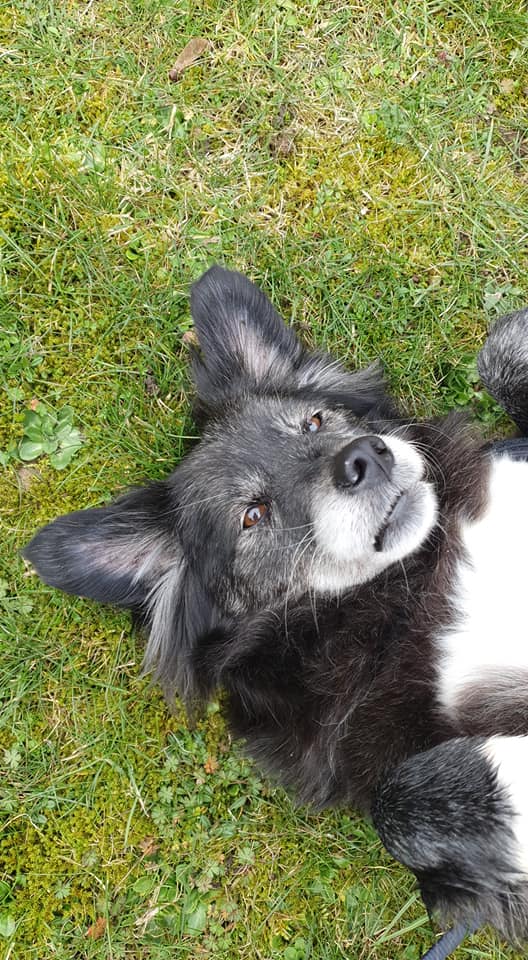
Hamlet not only found his forever home but also his favourite meadow where he can play and relax
The sensory overload, especially whilst settling in, can lead to dogs initially acting differently – often more timidly – than in the familiar environment of our shelter. This is why it is very important to us that we educate and prepare our adopters well and that we offer them thorough advice about dogs that are suited to their circumstances and lifestyle. We carry out pre-checks (and post-checks) and we discuss general aspects of adopting a dog from another country with the prospective adopters.
We have useful tips for them on how to deal with newly arrived dogs, with common behaviour patterns during the settling in period and safeguarding during walks, we talk about illnesses that cannot be ruled out based on incubation times, etc. This information is constantly updated and further refined.
However, in those cases where, for whatever reason, things do not work out in the new home, we take care of finding a new place for the dog, and even provide emergency foster homes. Under no circumstances will we allow a dog that was placed by us to end up in another shelter.
Up to now, we have been able to offer a swift solution in each of the few individual cases, where contrary to expectations, the adopters had to return a dog. Thus, we have been able to make the best of the situation in the interest of the dog.
In case of problems, we assist our adopters with help and advice and we are always available after an adoption and happy to help! On our Facebook pageyou can find some stories and photos of “happy endings” posted by the homeadopters themselves.
6. Omlet: As an NGO, how do you raise money for your animals, shelters, sterilisation projects, etc.? And how are you remunerated?
Einfach Tierschutz: In order to be able to cover the high project costs, we had to invest a lot of time in advertising and generating new supporting members to bring in enough donations. As an association that is mainly active via the fast-moving social media channels and also promotes the dogs through them, we depend on a well-functioning technical infrastructure.
The commitment of our local board is particularly important too, as it generates a lot of attention. Our local experts also have to regularly assess the socialisation of the dogs, as we place them very responsibly to ensure that dog and family get on well together later on. We invest in our social media presence, promotion via billboards, newspaper advertisements, flyers, info sheets, stickers, etc. and have thereby been able to maintain our high level of popularity and success, – which of course goes hand in hand with a further increase in administrative expenses.
7. Omlet: Is there anything else you would like to share with our readership?
Einfach Tierschutz: We would like to take this opportunity to thank you for the interview and the interest in our association and invite everyone to get an idea of our work and visit our homepage or follow our social media activities. We – and especially the animals – would be very happy about a small donation, which we would like to invest in food, vet visits/surgeries/medications, castrations or in the shelter itself, e.g. for the expansion or the cat enclosure.
We would also more than welcome new fellow members who would like to get involved in our activities (e.g. shelter travels), gladly from anywhere. You can find all information on our homepage: www.einfachtierschutz.de
Phoenix-Shelter: https://phoenix-shelter.com/
Facebook: https://www.facebook.com/groups/einfachtierschutzvermittlungen
Instagram: https://www.instagram.com/einfachtierschutz/
(You can also set up the pages in your desired language.)
Yours,
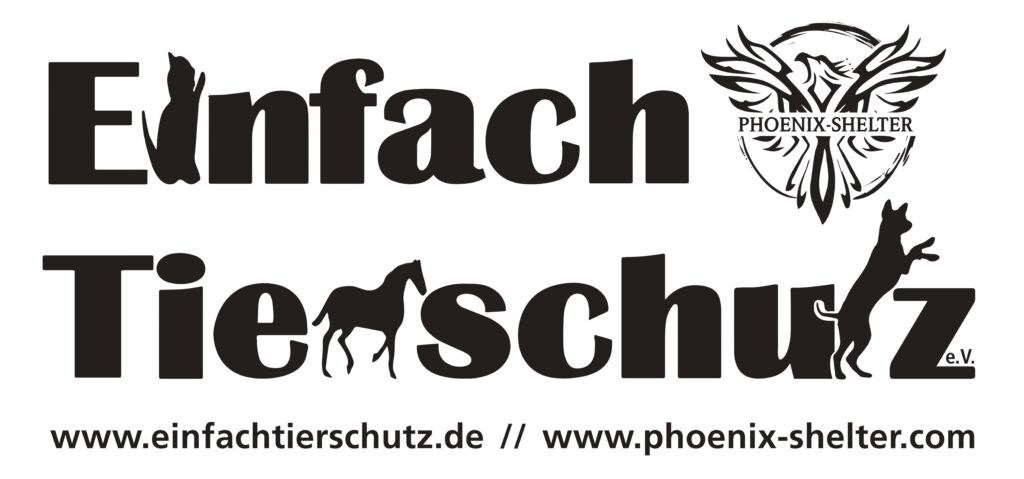
Omlet would like to thank Einfach Tierschutz e.V. for the interview and wishes them all the best for the future and that all dogs will find a great and safe new home.
Happy National Rescue Dog Day!
Note: this interview has been translated from German to English.
This entry was posted in Dogs

Some pets, including rabbits and guinea pigs, are naturally vegan. Hamsters and gerbils, although omnivorous, can thrive on a vegan diet in which the protein content is supplied by plants and vegetables. Others, including omnivorous dogs and out-and-out carnivore cats, cannot be easily pleased on meat-free diets.
All animals need to have their nutritional needs satisfied. But this does not mean you can’t have a vegan dog. Vegan cats, though, are a lot trickier.
Can my dog have a vegan diet?
 If you were to meet a species of animal for the first time and had to make an accurate guess about its diet, you would get lots of clues by looking at its teeth. The teeth of a dog, like the teeth of a bear, proclaim loud and clear that this animal is an omnivore – that is, one that eats both meat and vegetables. If you think of your dog as a domesticated wolf, you get a good idea of its natural diet.
If you were to meet a species of animal for the first time and had to make an accurate guess about its diet, you would get lots of clues by looking at its teeth. The teeth of a dog, like the teeth of a bear, proclaim loud and clear that this animal is an omnivore – that is, one that eats both meat and vegetables. If you think of your dog as a domesticated wolf, you get a good idea of its natural diet.
However, as the panda proves, a supposed meat-eater can sometimes get by perfectly well on a vegan diet. A panda’s teeth are similar to any other bear’s – long canines for meat-eating and molars for grinding vegetation. And yet pandas don’t eat anything other than bamboo. So, if a bear can be vegan, does that mean you can have a vegan dog?
The answer is yes – but it’s a yes with lots of small print! A dog requires a diet that contains the fats and proteins it would get from meat. It is dangerous to ignore this basic need and simply feed your pet with whatever you please. Some dogs have delicate stomachs at the best of times, and a low-fat, high-fibre diet can cause potentially life-threatening problems. A diet that excludes meat should never be fed to a dog without the advice of a professional pet dietician.
The collagen, elastin and keratin found in meat diets are not easily replaced by vegi equivalents. Your dog will also need the ‘long chain’ omega-3 fats found in animal products such as egg, fish and some meats. Vegan omega-3 fats are not the same as animal-derived ones.
All of which presents a headache for the vegan dog owner. There are, however, products available that claim to let your dog live a healthy, meat-free life. Before you take the plunge, it is essential to seek professional, scientific advice and guidance. Compromise is usually the best choice here – a vegan diet supplemented by some of the animal-derived essentials. Crickets, for example, can provide lots of the amino acids and keratin a vegan diet lacks, and they’re 65% protein.
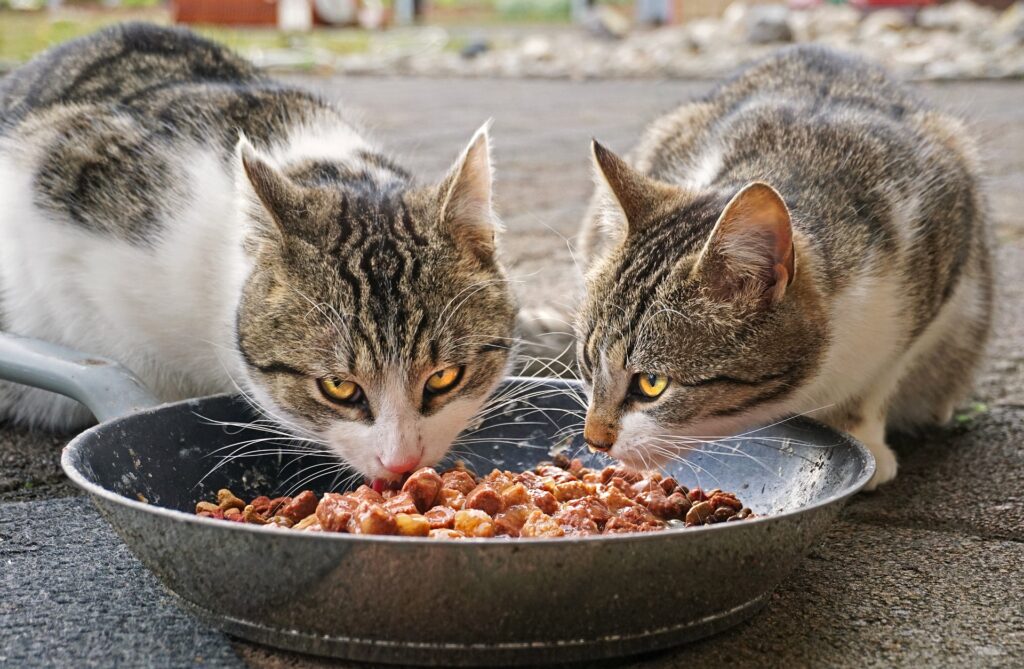
Can my cat have a vegan diet?
The compromise approach is even more important for cats. These are amongst the planet’s true carnivores, obtaining all their dietary requirements from other animals.
The main challenge with minimising the meat in a cat’s diet is that, unlike many mammals (including dogs), cats cannot produce certain proteins. They have to absorb these from the meat and fish in their diet. Amino acids are another issue – cats deficient in the animal-derived amino acid taurine, for example, usually succumb to a specific type of heart problem.
Even a fortified vegan cat food cannot be confidently recommended. Turn the situation on its head, and try to imagine weaning a rabbit onto a meat-only diet, and you get some idea of the challenge – and the ethics – involved.
There are some lab-grown ‘meat’ products in development, with vegan and vegetarian cat owners in mind. However, whether these will arrive – and remain – on the market any time soon is hard to guess.
For many vegan pet owners, there is a huge ethical issue involved in feeding the animals they share a space with. Ethics, however, include the animal’s needs too, and it’s an almost impossible issue to resolve when it comes to cats. If you are able to reduce but not eliminate the meat in your cat’s diet, that’s the safer option.
Top 10 pets for vegan households
There are, of course, plenty of other pets that don’t eat meat, or that eat some meat but can still thrive on a meat-free diet. Here are our ten favourites.
 1. Rabbits. No problems here – rabbits are happy vegans, with diets based on hay and vegetables. You could argue that the soft pellets they eject and then eat are animal products of a sort, but they are simply semi-digested vegetation.
1. Rabbits. No problems here – rabbits are happy vegans, with diets based on hay and vegetables. You could argue that the soft pellets they eject and then eat are animal products of a sort, but they are simply semi-digested vegetation.
2. Guinea pigs. Like rabbits, these wonderful little characters thrive on a 100% vegan diet.
3. Hamsters. As most hamster owners feed their pets with shop-bought hamster food, they may not be able to say exactly what the ingredients of that food are. However, vegetarian and vegan hamster foods are readily available.
4. Gerbils. Like hamsters, gerbils are omnivores that can live happily on a vegan diet. They tend to have rather delicate stomachs, so feeding them with a high-quality pellet mix is essential. Too much fresh stuff can cause problems.
5. Mice. Although they will eat pretty much anything in the wild, mice can thrive on vegan diets; but it is still best to use a food mix prepared specifically for them. This ensures that they will not be deficient in any of the vitamins and minerals they need.

6. Rats. These are the most omnivorous of rodents, but as long as you feed them a vegan mix that has been fortified with all the nutrients they need, they will thrive. Indeed, rats who eat too much animal fat tend to become fat and die prematurely.
7. Chickens. If you watch a free-range hen, it soon becomes clear that she will eat anything – grass, beetles, worms, and everything in your veg patch if you’re not careful! Most chicken feed emulates this mix of plant and animal products. However, it is possible to buy vegan chicken feed, and circumstantial evidence suggests that hens can thrive on it. However, they are likely to produce fewer eggs, and you will not be able to stop them scratching for worms and bugs, no matter how vegan the layers pellets are!
8. Budgies and parrots. Vegans will have no obstacles to face with budgies and parrots, unless the birds are being bred. Egg-brooding female birds need a protein boost, normally delivered via an egg-based food or cooked meat. Vegan alternatives are available, though.
9. Finches. Many finch species enjoy bugs and mealworms as treats, but these are not an essential part of an adult finch’s diet. These birds thrive on a mixture of seeds and fresh vegetables.
10. One for reptile fans. When you think of pet snakes and lizards, you probably have an image of dead mice or doomed crickets. However, there are a few commonly kept pet reptiles that eat a 100% vegan diet, the most popular being the Green iguana. Getting the balance of vegetables just right is very important for the animal’s health, but meat is certainly something you won’t have to worry about.
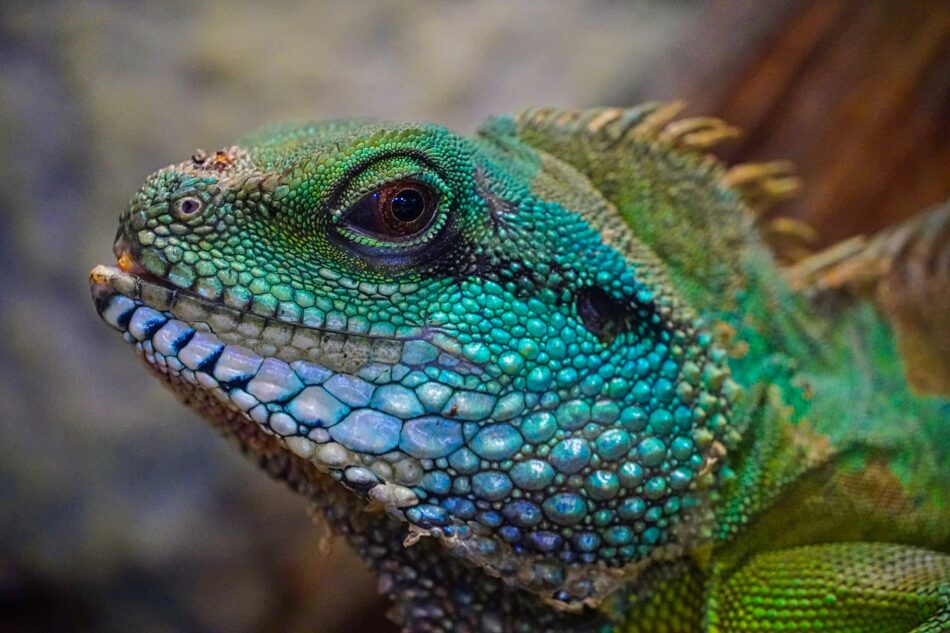
There is no shortage of choice when it comes to vegan pets. Keeping a vegan cat or dog is a much trickier proposition, though. And with all these animals, a balanced diet that matches the pet’s nutritional requirements should be your primary goal.
This entry was posted in Budgies





 Wipe Your Dog’s Paws After Walkies
Wipe Your Dog’s Paws After Walkies







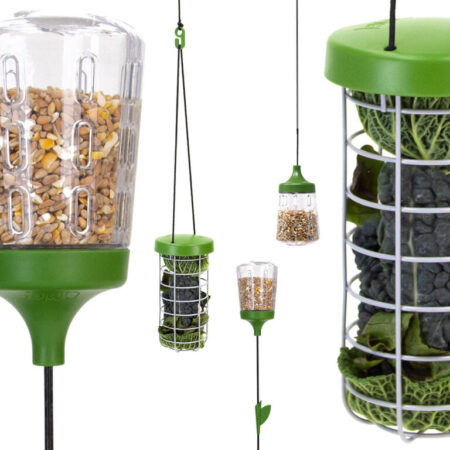
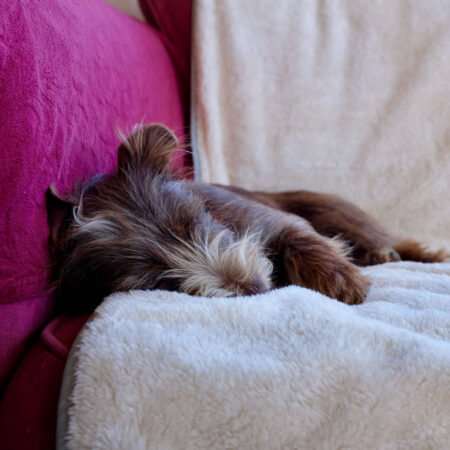

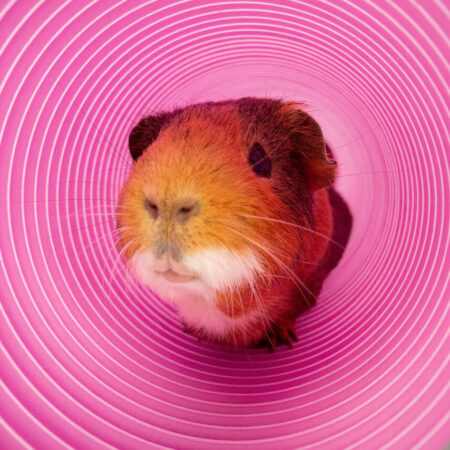
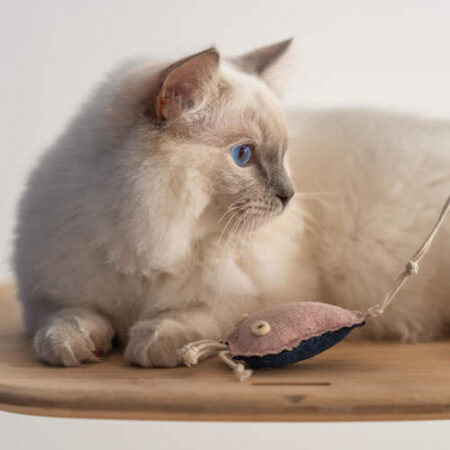
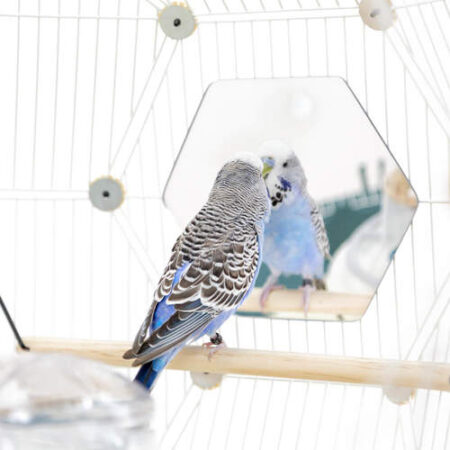

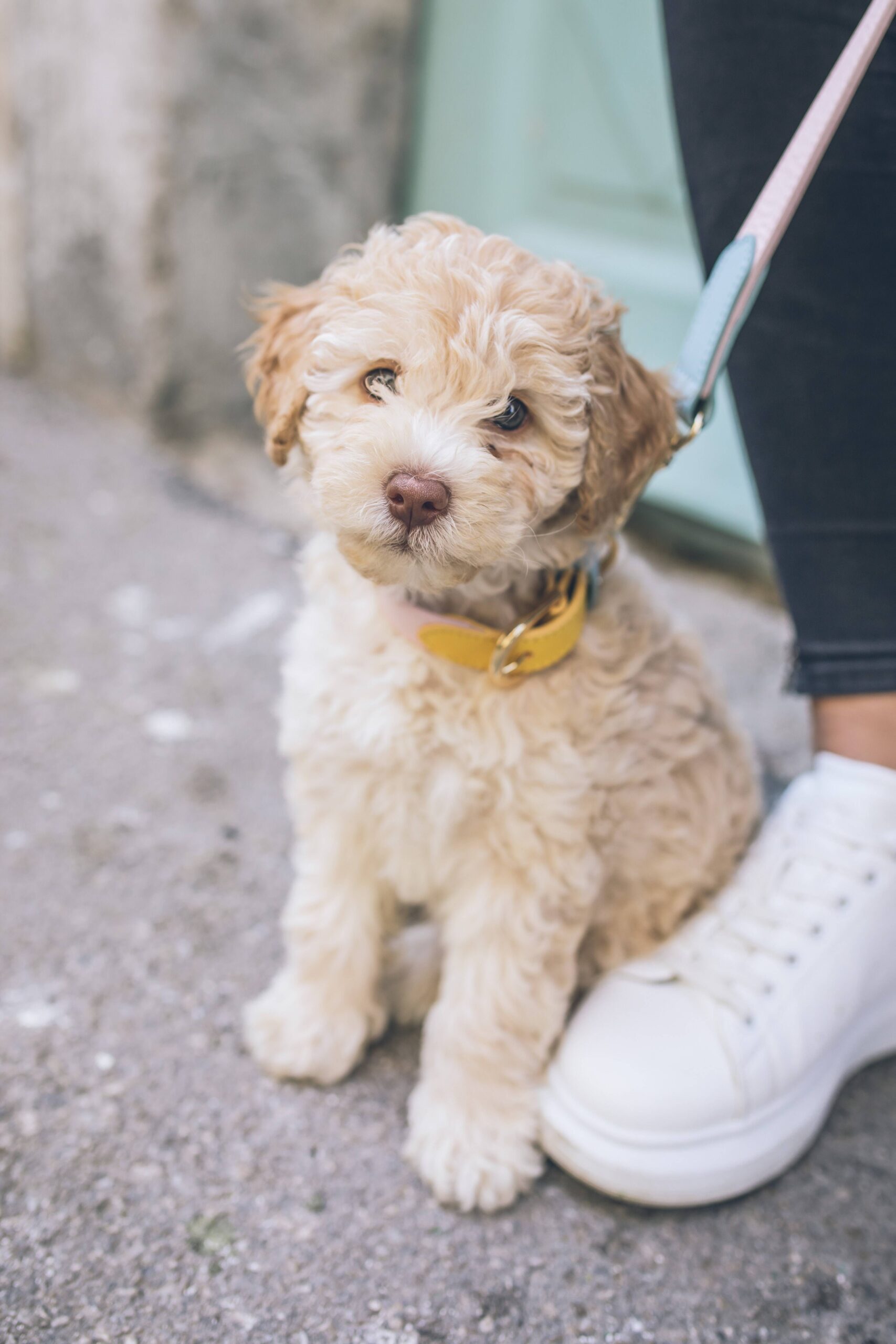

 If your boss has given the green light to bring your dog to the office, there might be some things to check before going ahead. Of course, check in with your colleagues that no one has allergies or is afraid of dogs. If other colleagues are also going to be bringing their dog to the office, consider whether your dog will be okay with that, or if it could cause some stress.
If your boss has given the green light to bring your dog to the office, there might be some things to check before going ahead. Of course, check in with your colleagues that no one has allergies or is afraid of dogs. If other colleagues are also going to be bringing their dog to the office, consider whether your dog will be okay with that, or if it could cause some stress. 
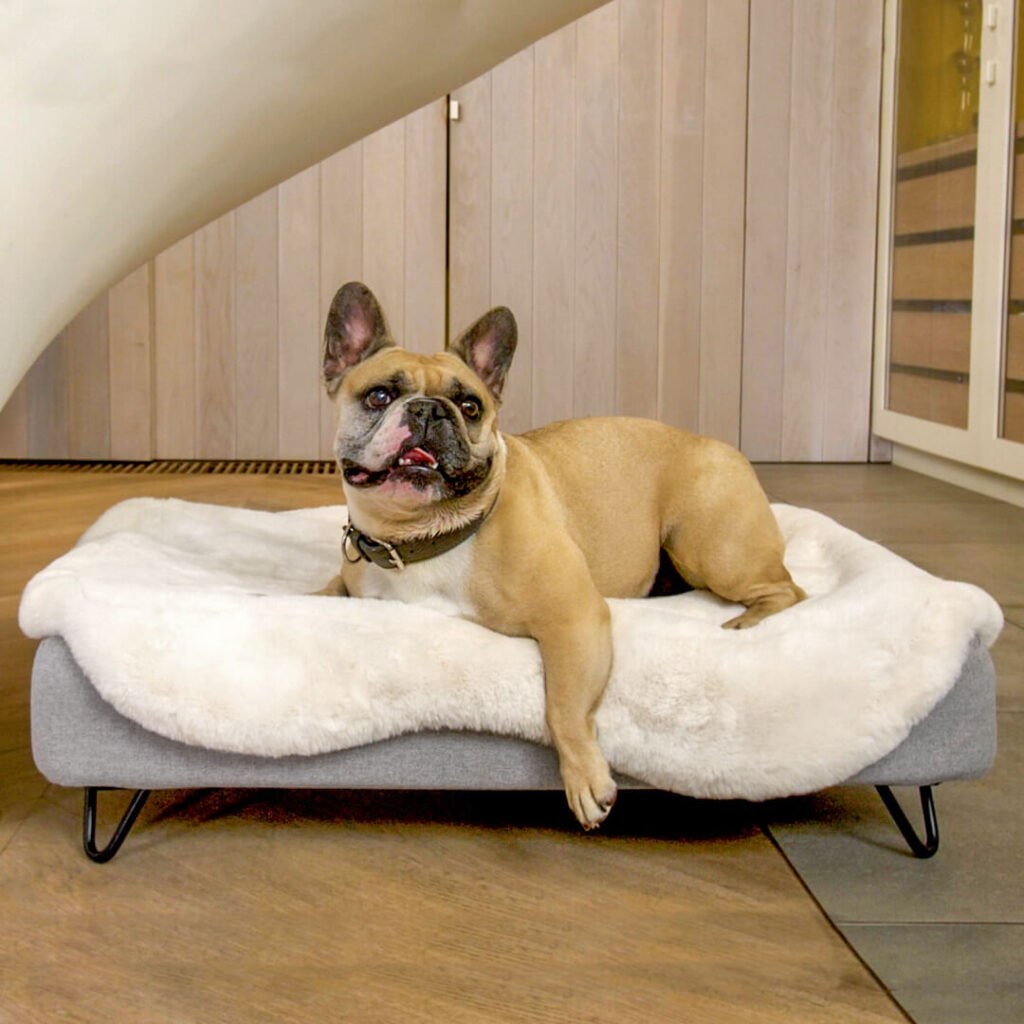
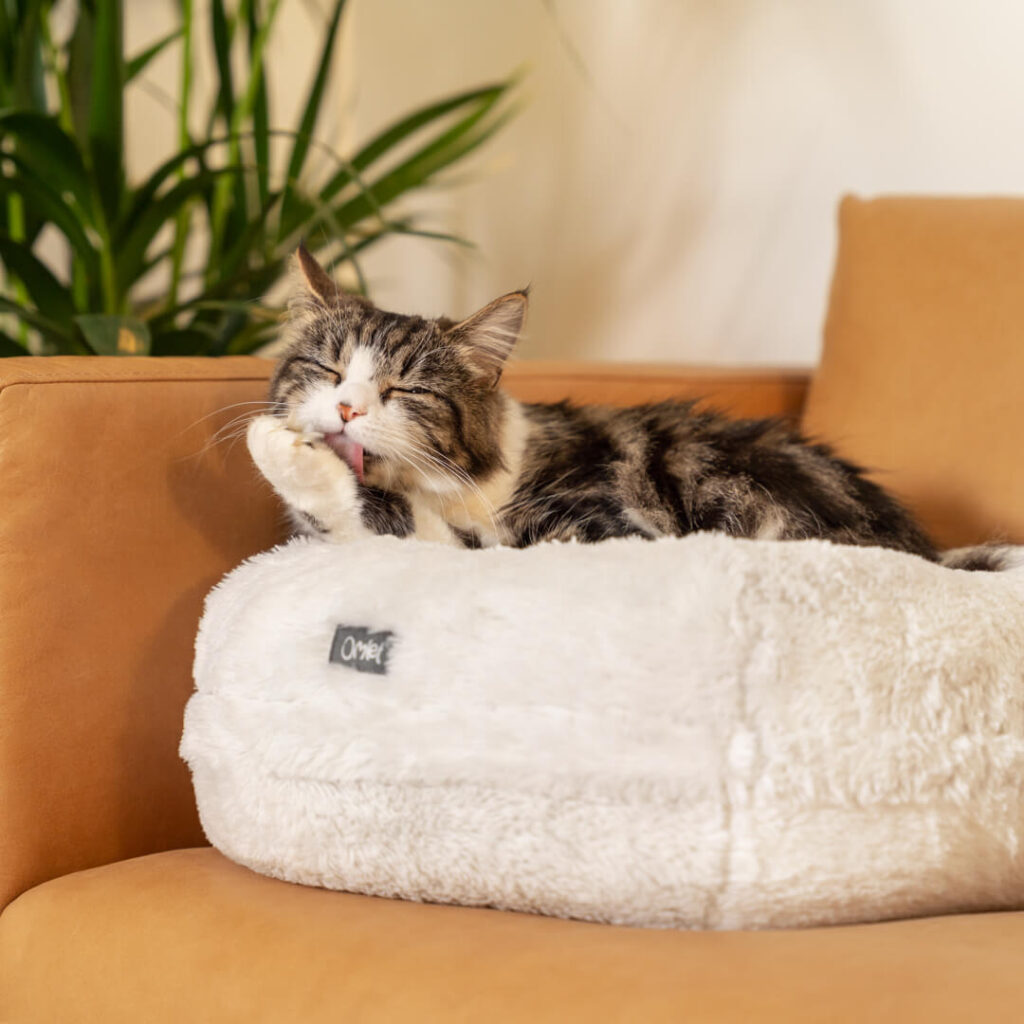
















 A dog who has been taught positive behaviour will be your best friend – fun, affectionate and reliable. It’s straightforward teaching your dog this canine version of positive thinking, but it won’t happen unless you lead the way.
A dog who has been taught positive behaviour will be your best friend – fun, affectionate and reliable. It’s straightforward teaching your dog this canine version of positive thinking, but it won’t happen unless you lead the way. 2. Affection
2. Affection 4. A trip to a favourite place
4. A trip to a favourite place 1. Keep it simple
1. Keep it simple 3. Quality time
3. Quality time












 20.05. – National Rescue Dog Day! We would like to use this special date to address animal welfare, shelters, the hard work they have to face every day and of course everything about the topic of adoption.
20.05. – National Rescue Dog Day! We would like to use this special date to address animal welfare, shelters, the hard work they have to face every day and of course everything about the topic of adoption.  Einfach Tierschutz:
Einfach Tierschutz:  Since spring 2020, we have been running our second shelter especially for puppies, the “Phoenix Puppy Shelter”, where up to 50 puppies and young dogs are fostered, cared for and prepared for placement in a family on an area of 2,000 m². In addition, we were able to realise a long-cherished wish in 2020 with the construction of the cat house on our premises and thus also provide our cats with safe and species-appropriate accommodation.
Since spring 2020, we have been running our second shelter especially for puppies, the “Phoenix Puppy Shelter”, where up to 50 puppies and young dogs are fostered, cared for and prepared for placement in a family on an area of 2,000 m². In addition, we were able to realise a long-cherished wish in 2020 with the construction of the cat house on our premises and thus also provide our cats with safe and species-appropriate accommodation.



 Castration Marathon in Baraila, Romania
Castration Marathon in Baraila, Romania

 We recently had our first big tombola where our members purchased lots from us in order to have the chance to win many great prizes from generous donors. The proceeds went directly to the shelter.
We recently had our first big tombola where our members purchased lots from us in order to have the chance to win many great prizes from generous donors. The proceeds went directly to the shelter. 





 If you were to meet a species of animal for the first time and had to make an accurate guess about its diet, you would get lots of clues by looking at its teeth. The teeth of a dog, like the teeth of a bear, proclaim loud and clear that this animal is an omnivore – that is, one that eats both meat and vegetables. If you think of your dog as a domesticated wolf, you get a good idea of its natural diet.
If you were to meet a species of animal for the first time and had to make an accurate guess about its diet, you would get lots of clues by looking at its teeth. The teeth of a dog, like the teeth of a bear, proclaim loud and clear that this animal is an omnivore – that is, one that eats both meat and vegetables. If you think of your dog as a domesticated wolf, you get a good idea of its natural diet.
 1. Rabbits
1. Rabbits
